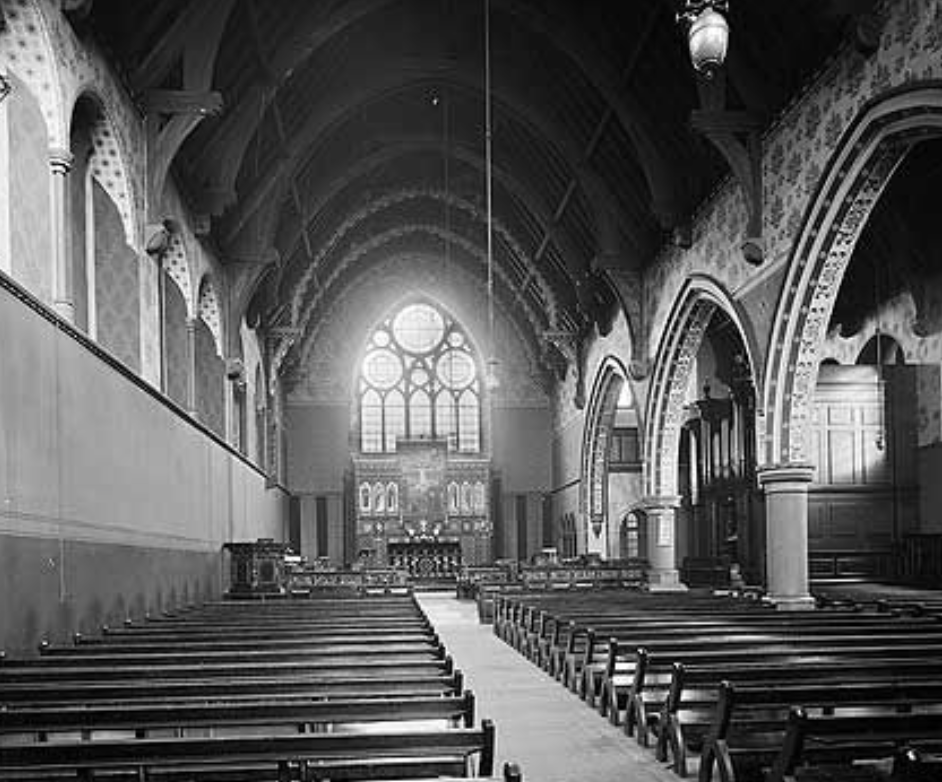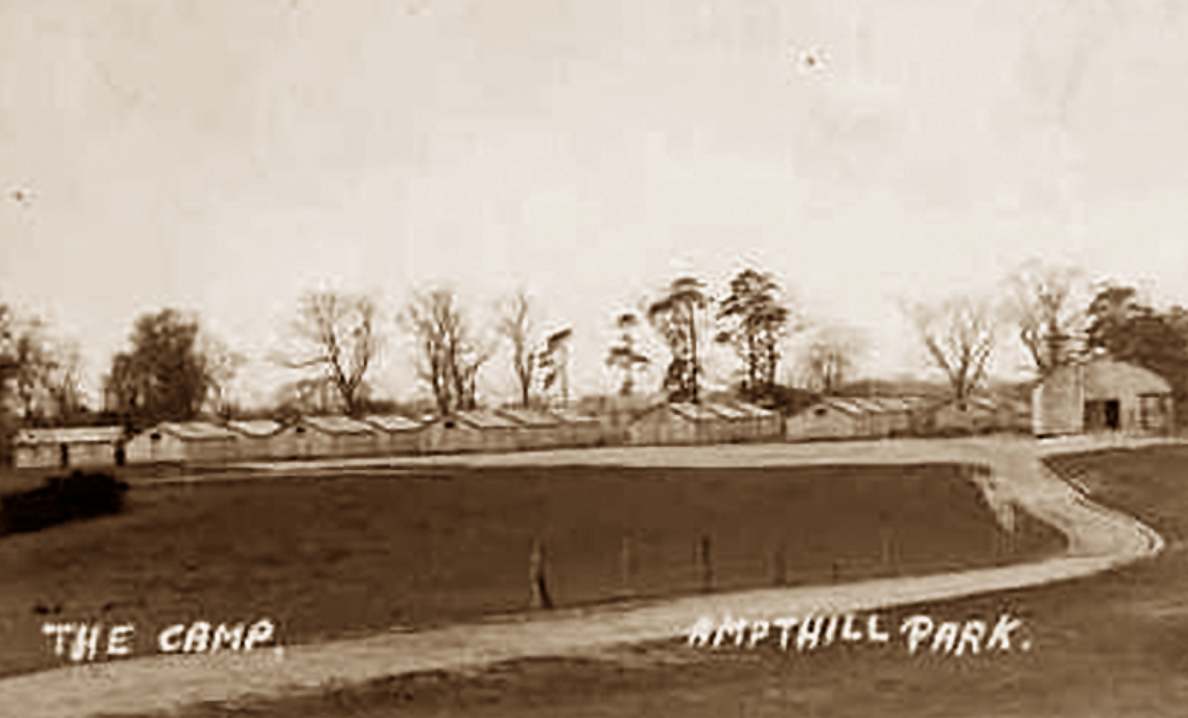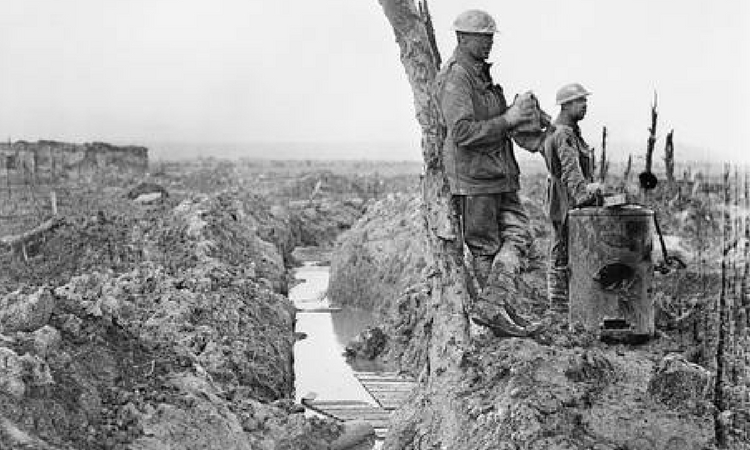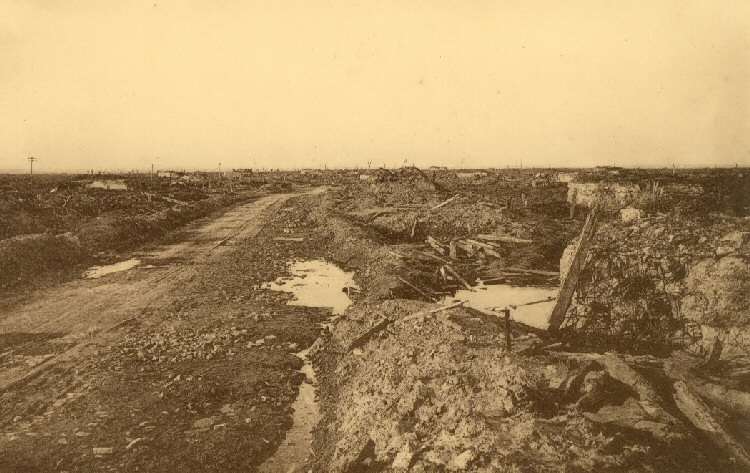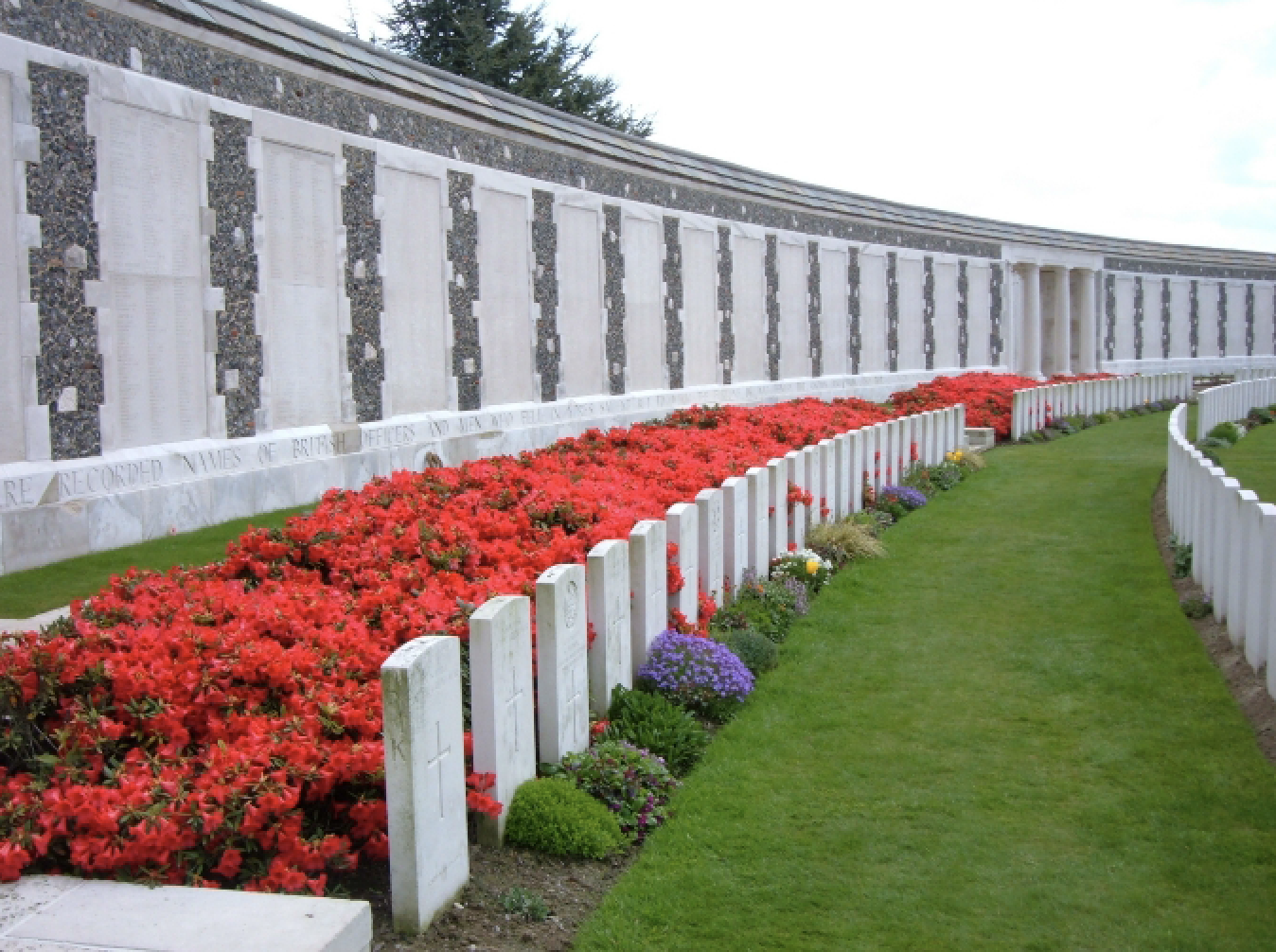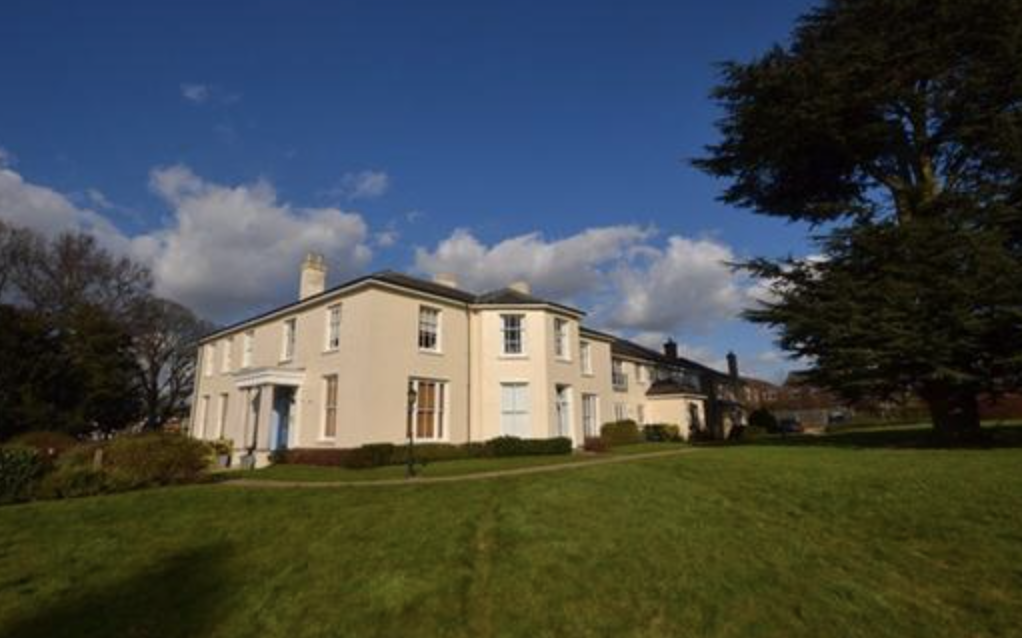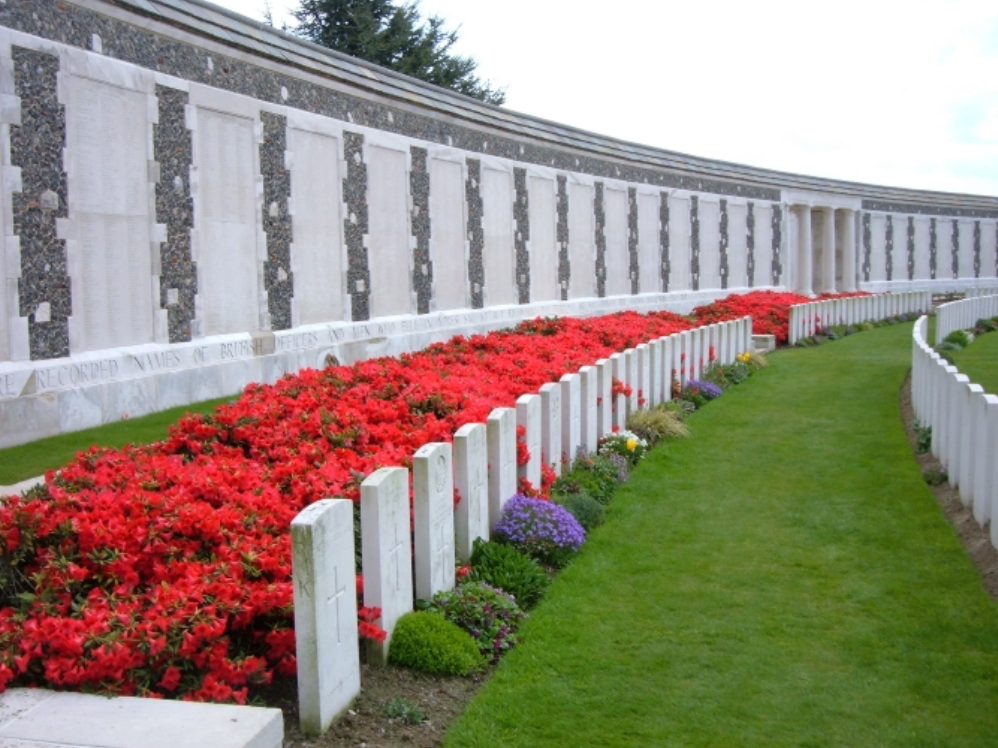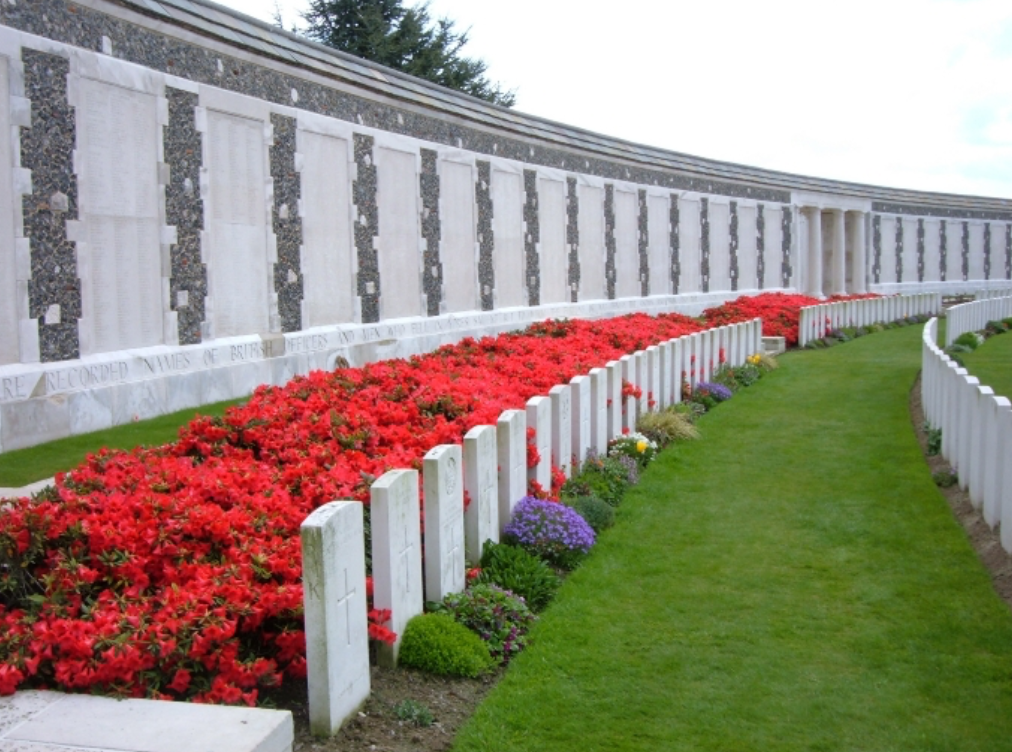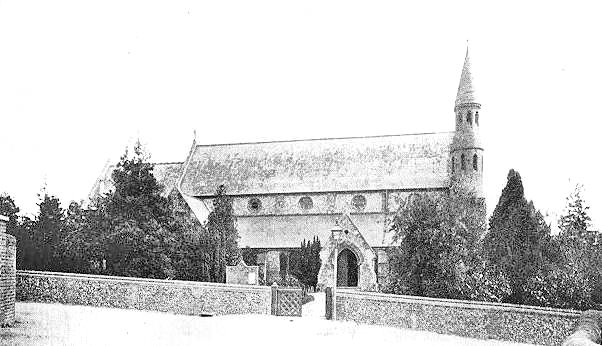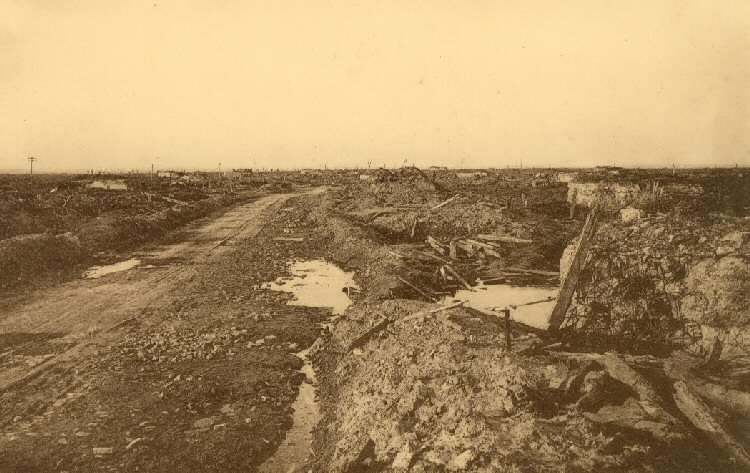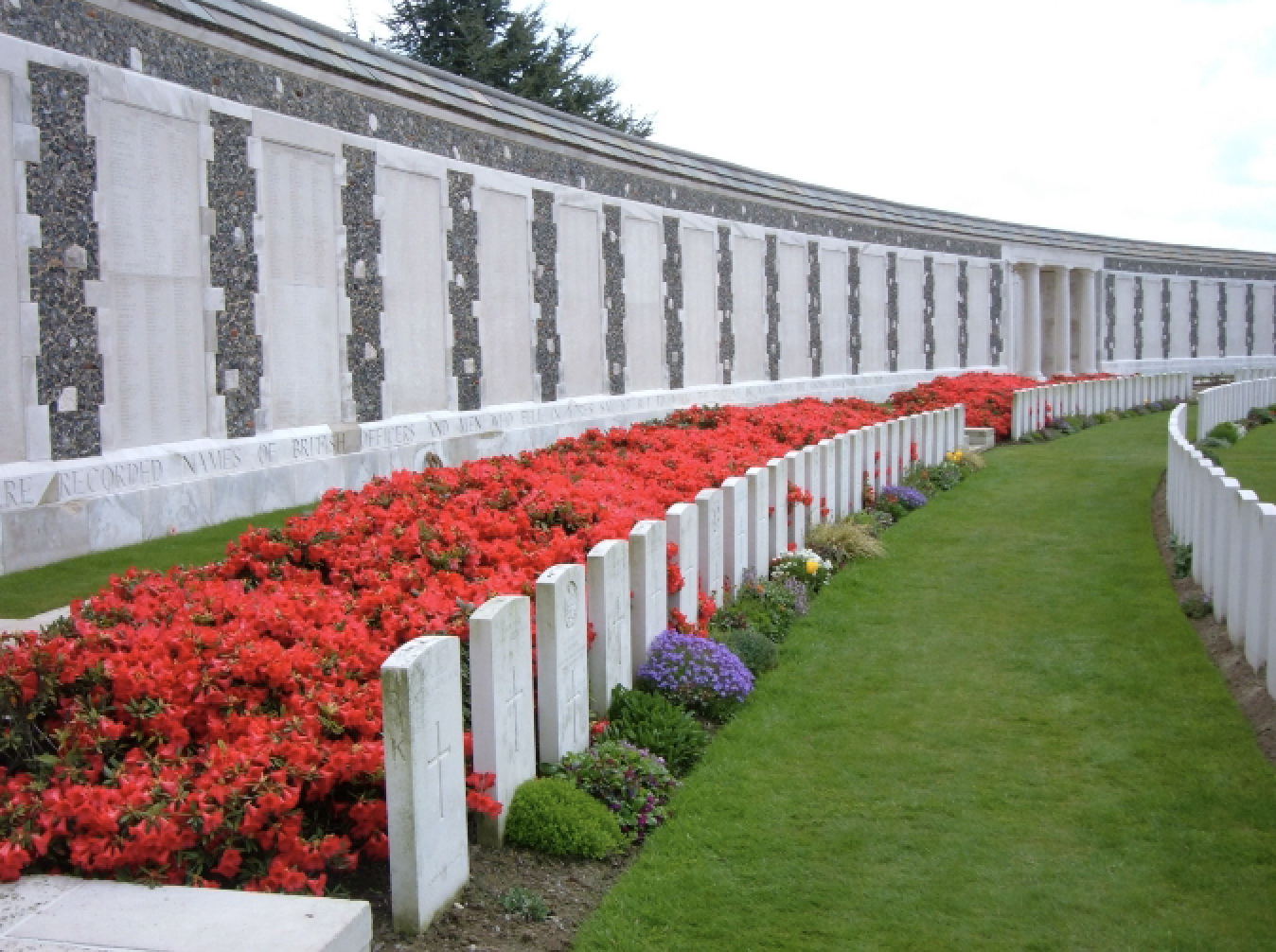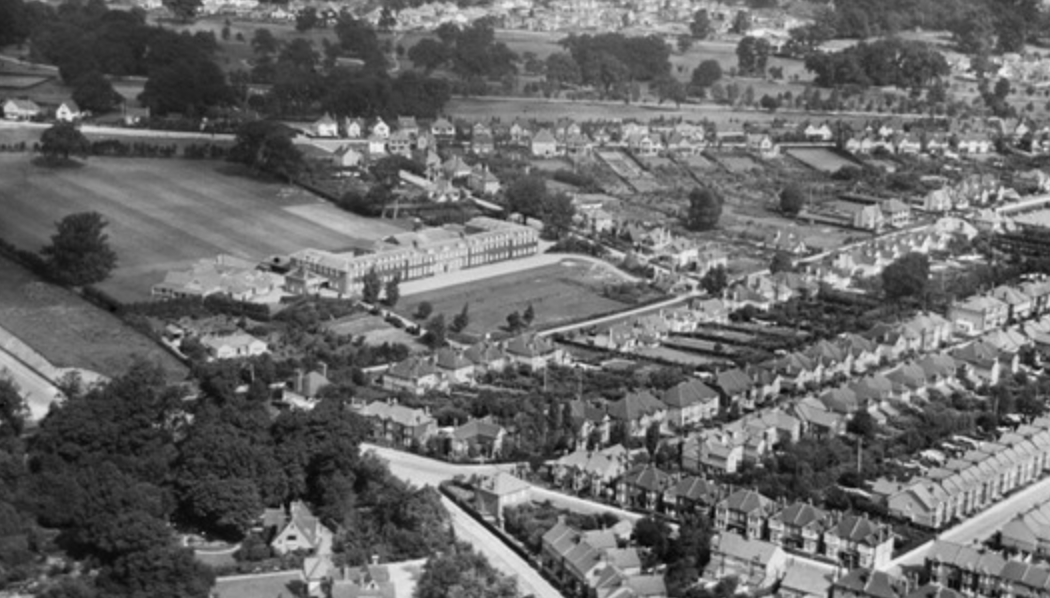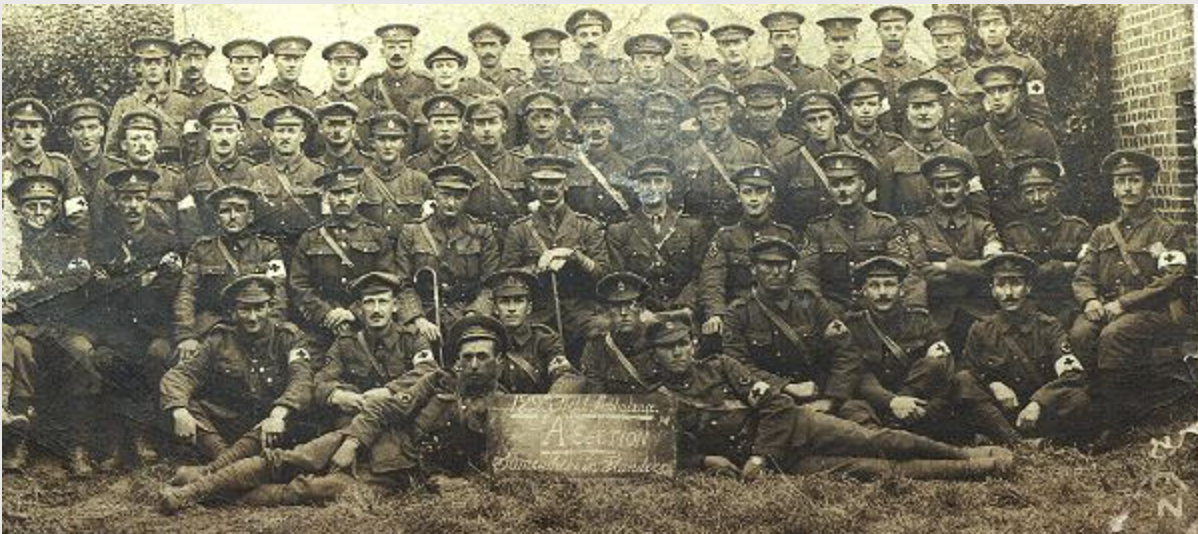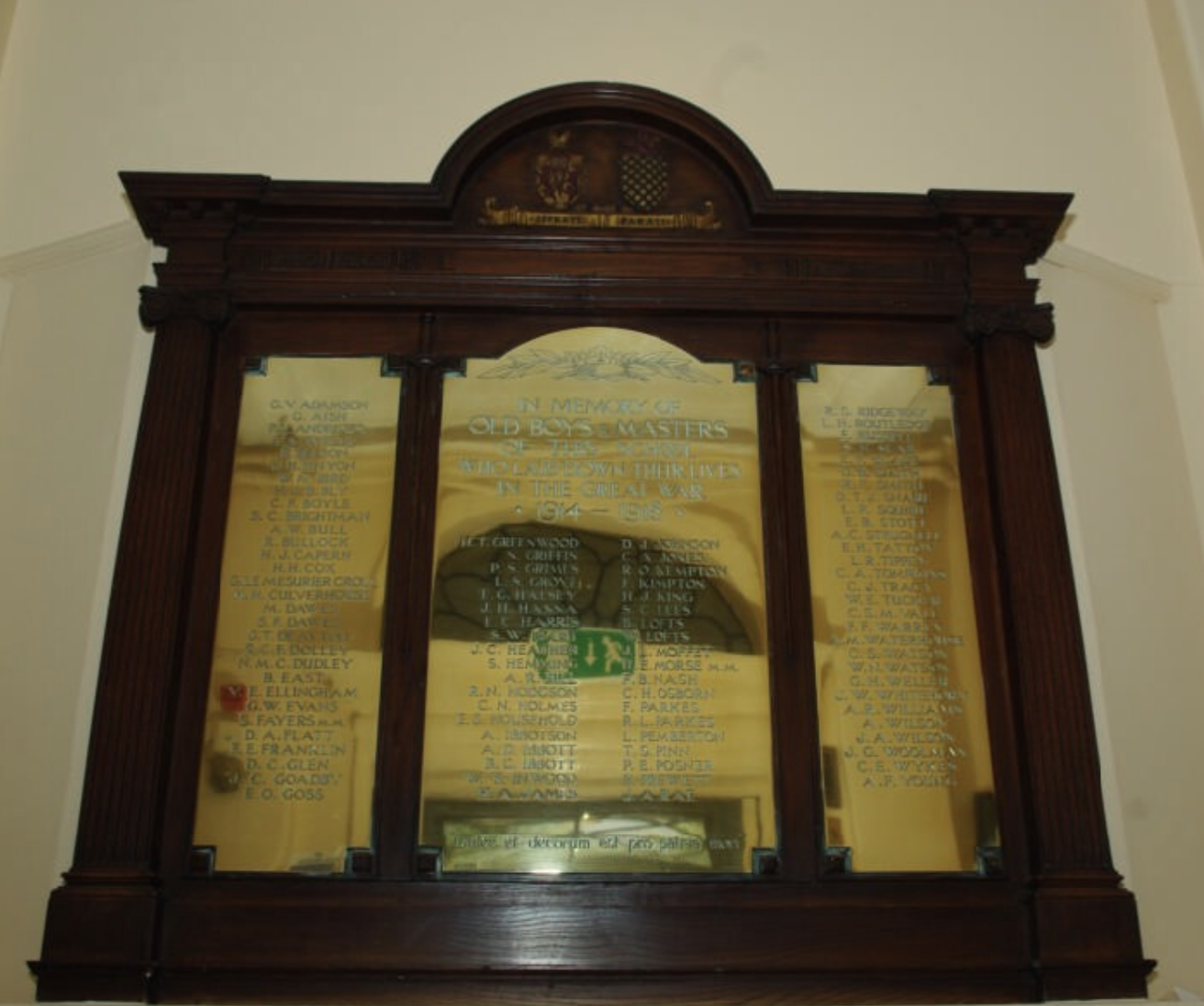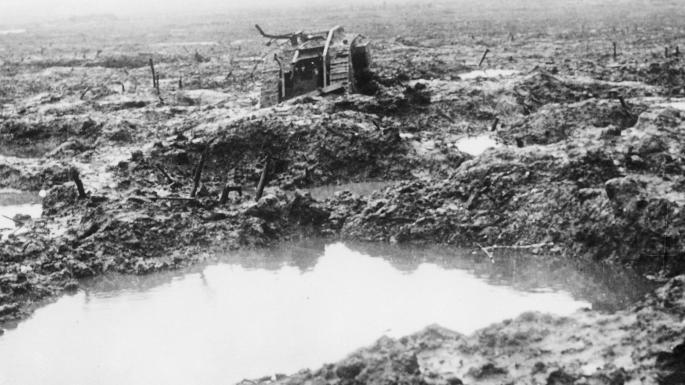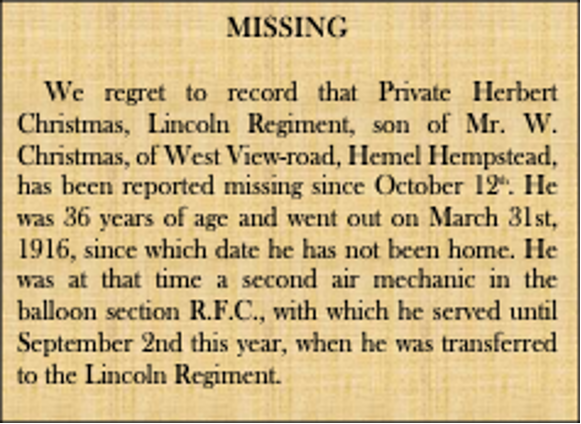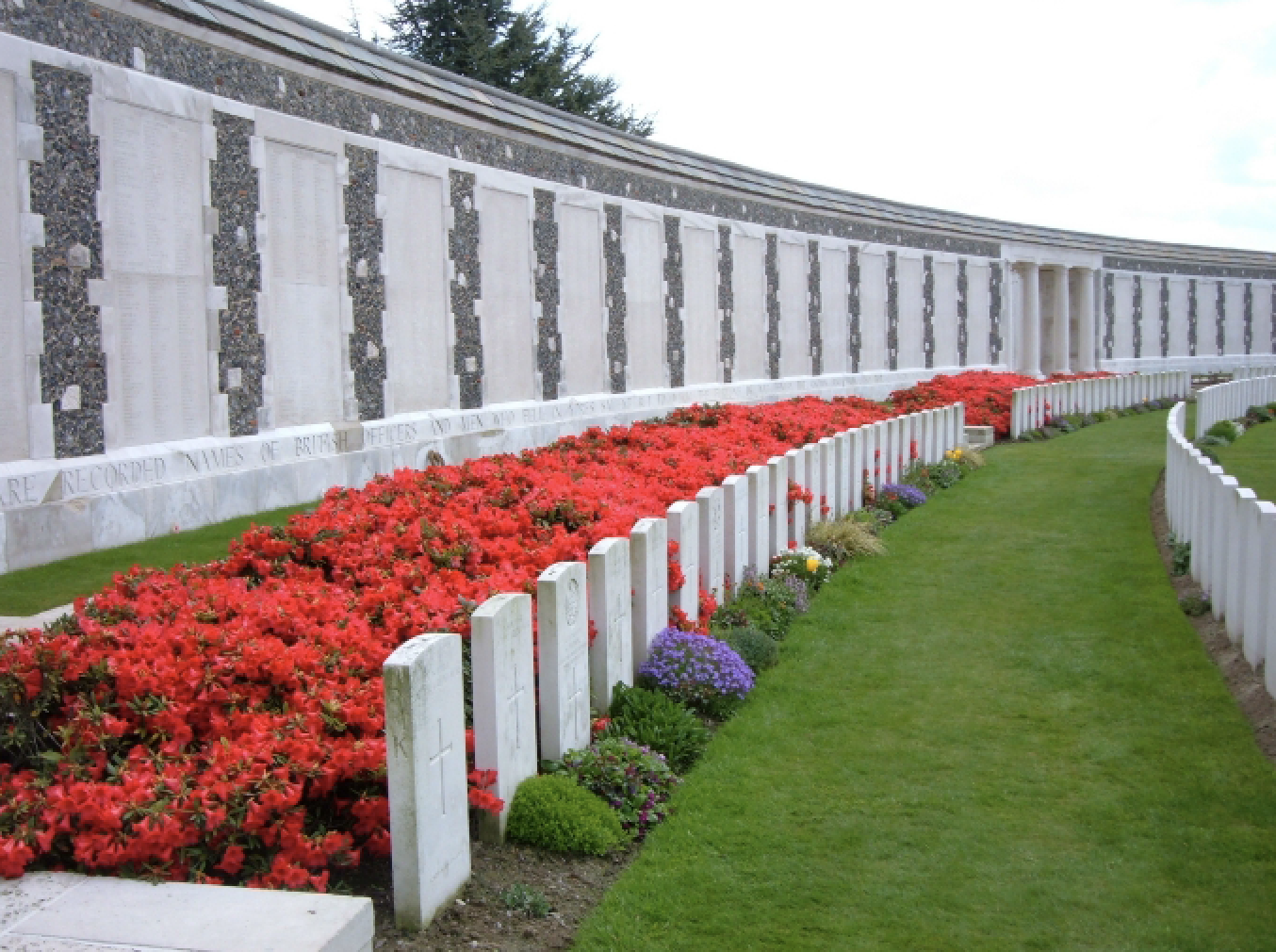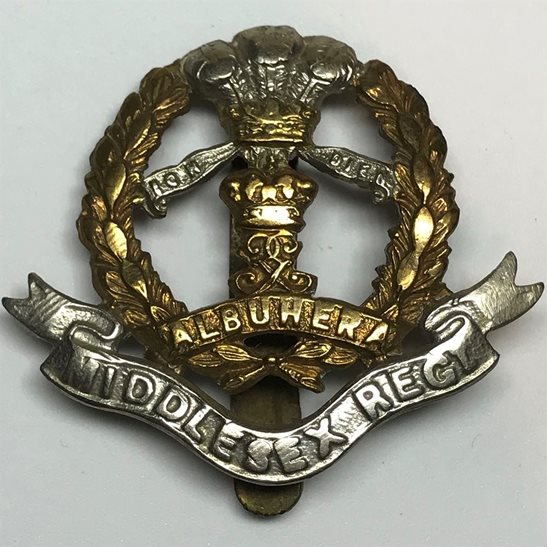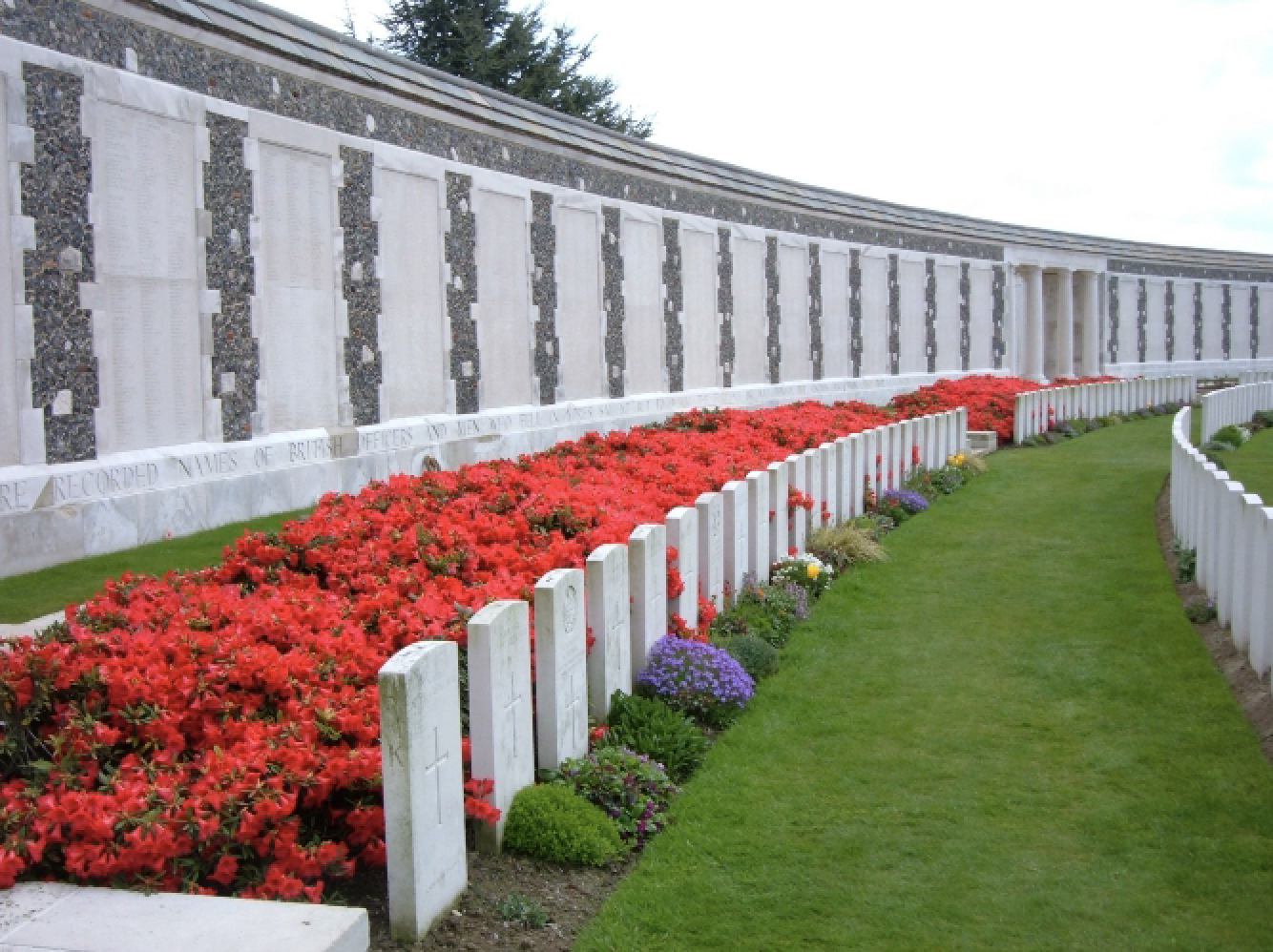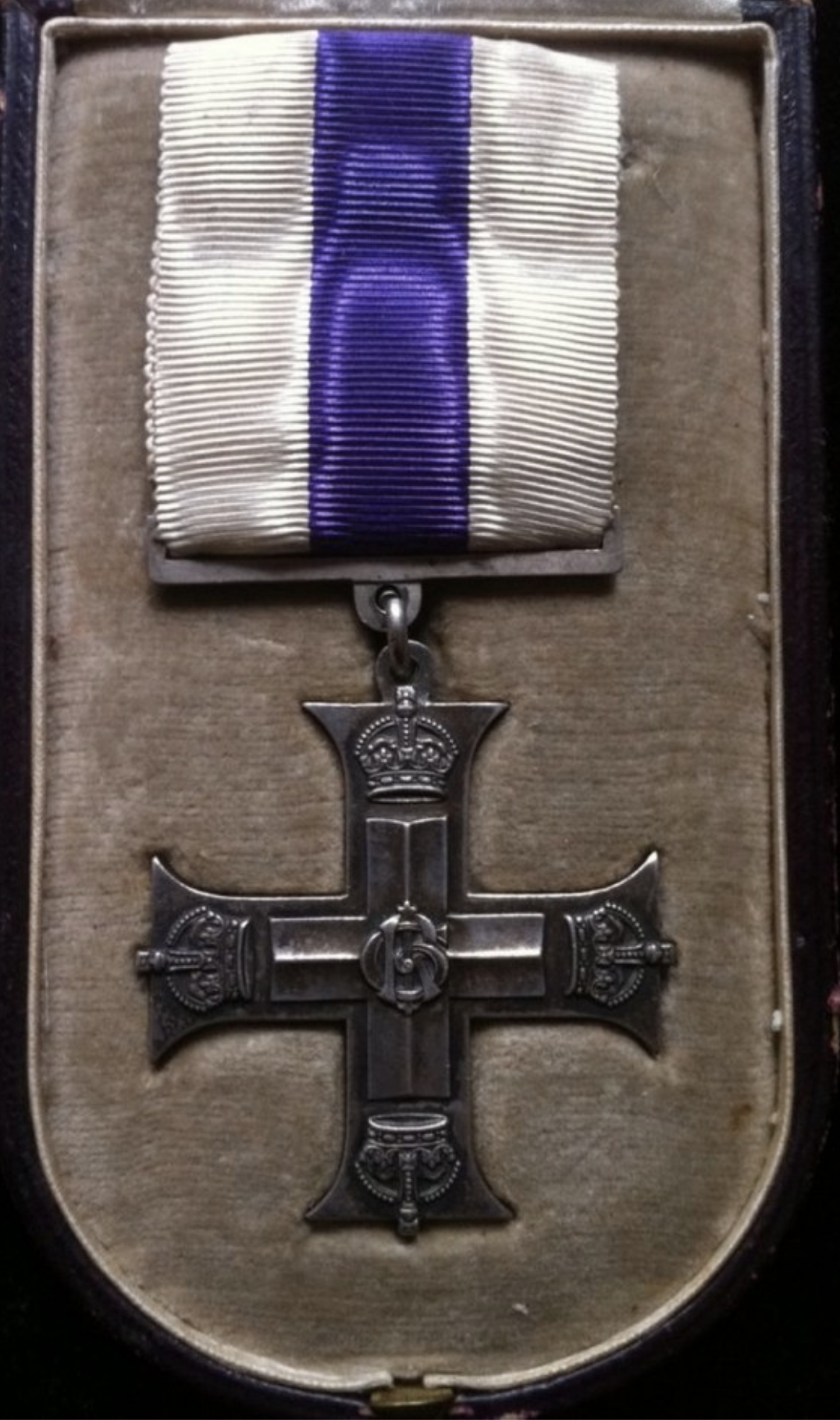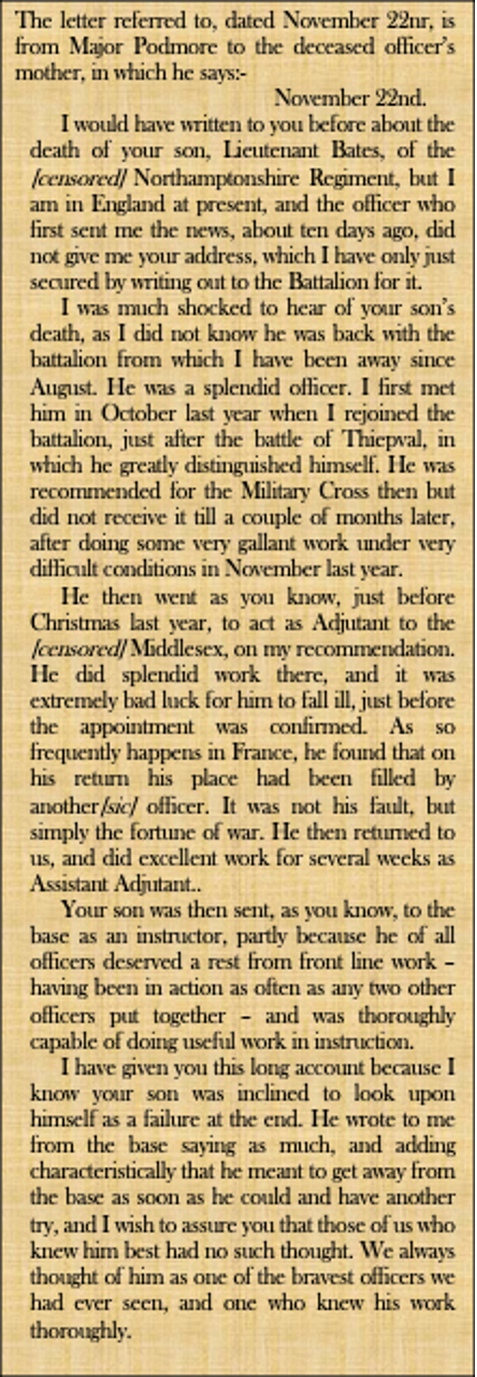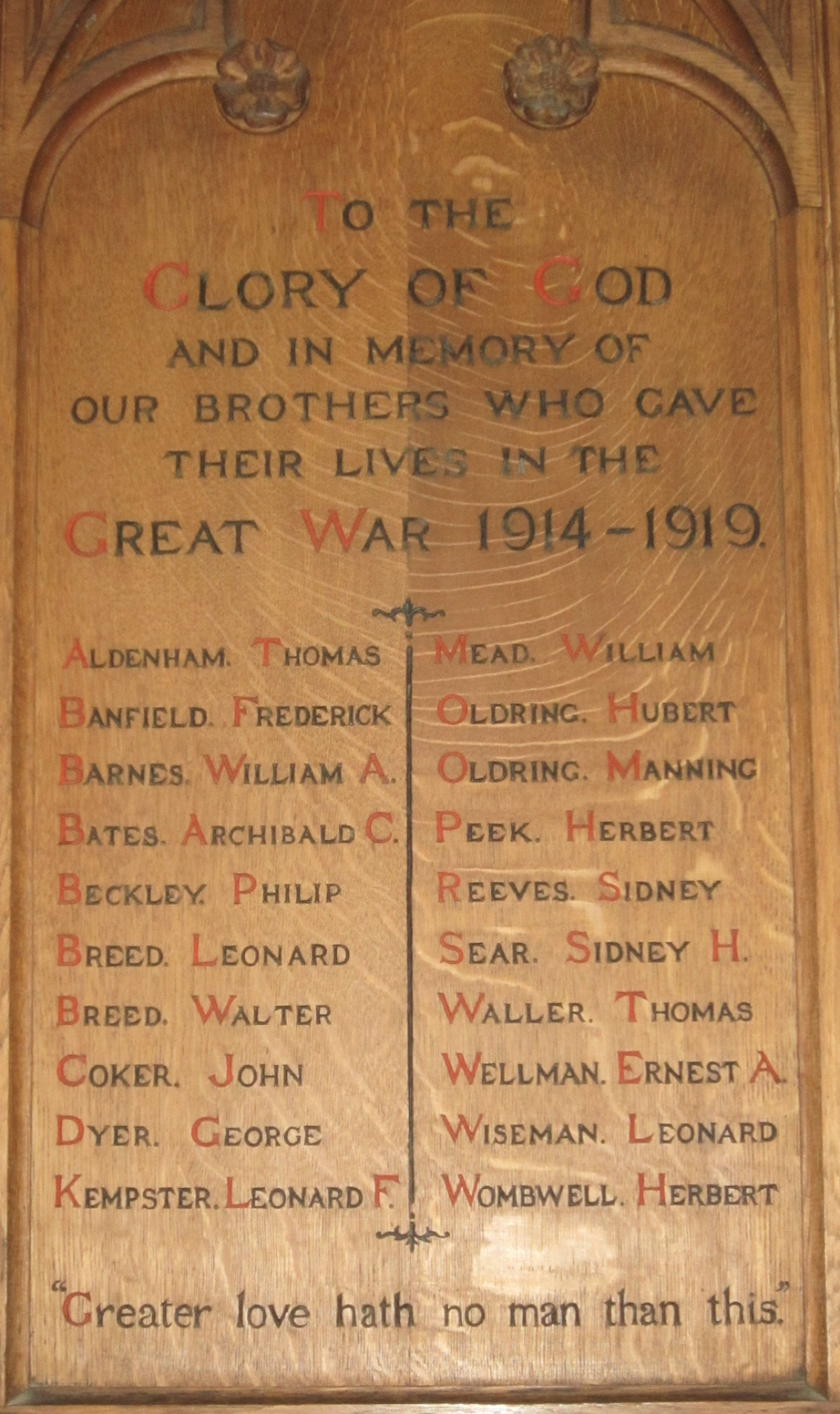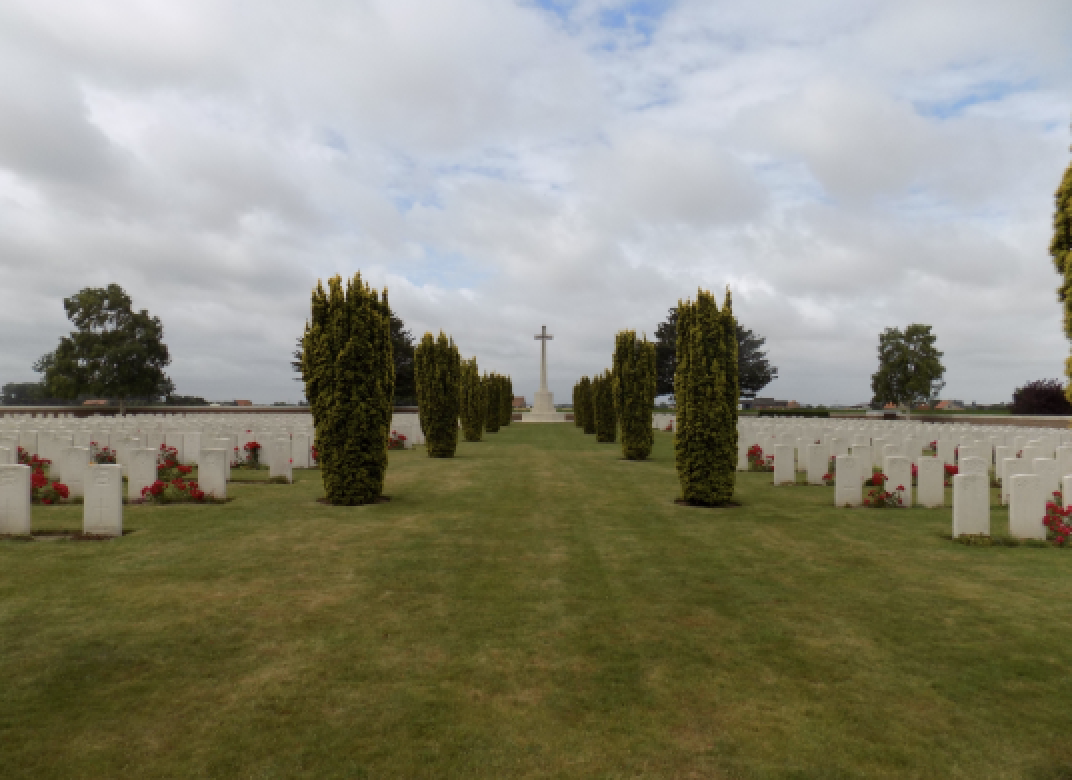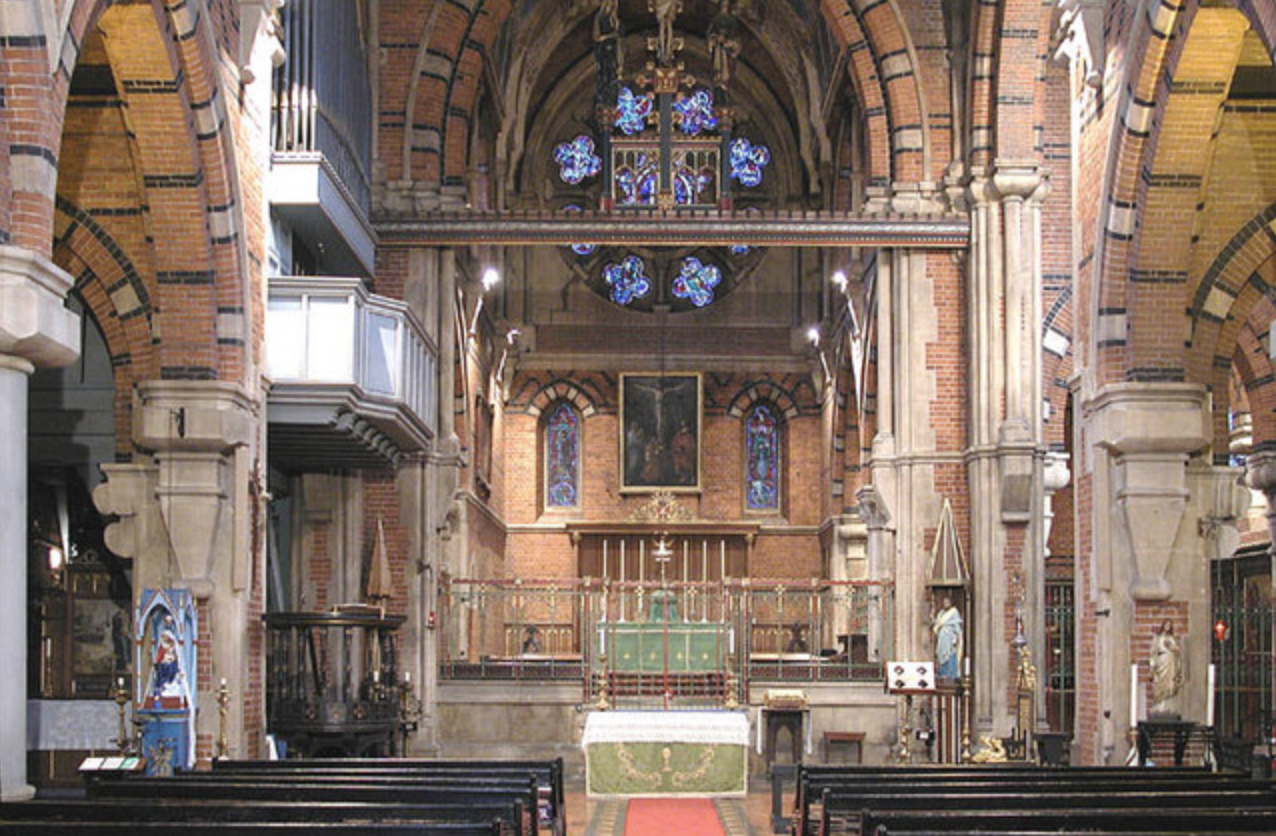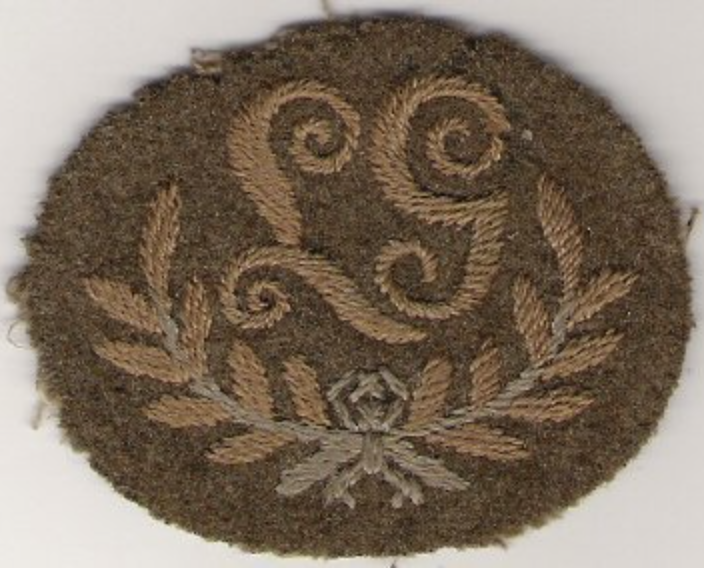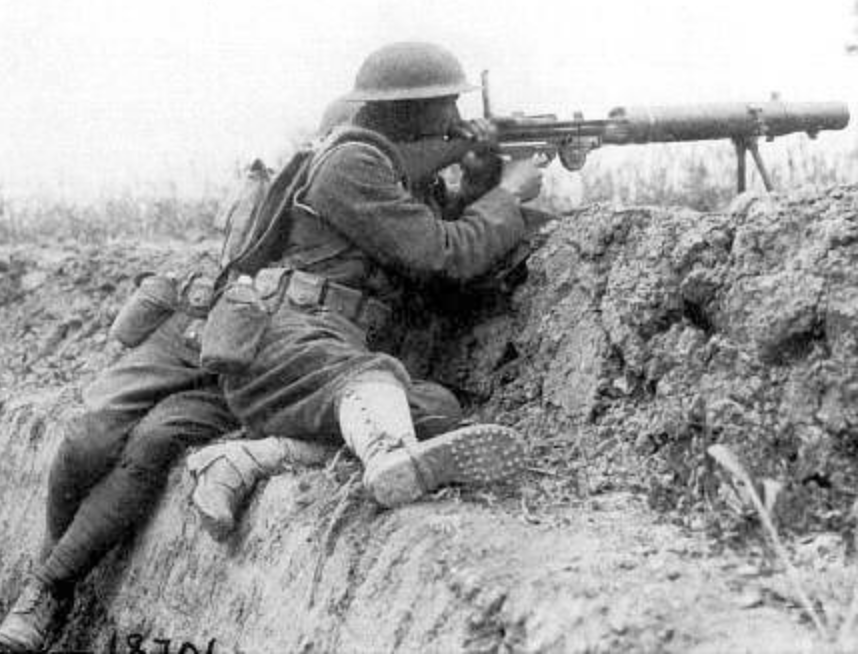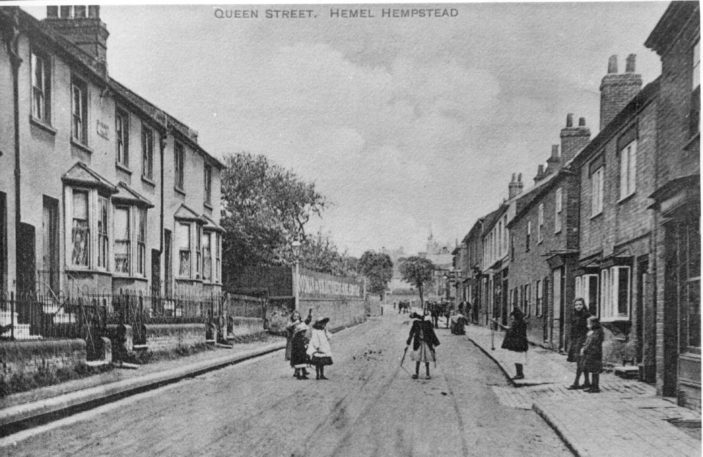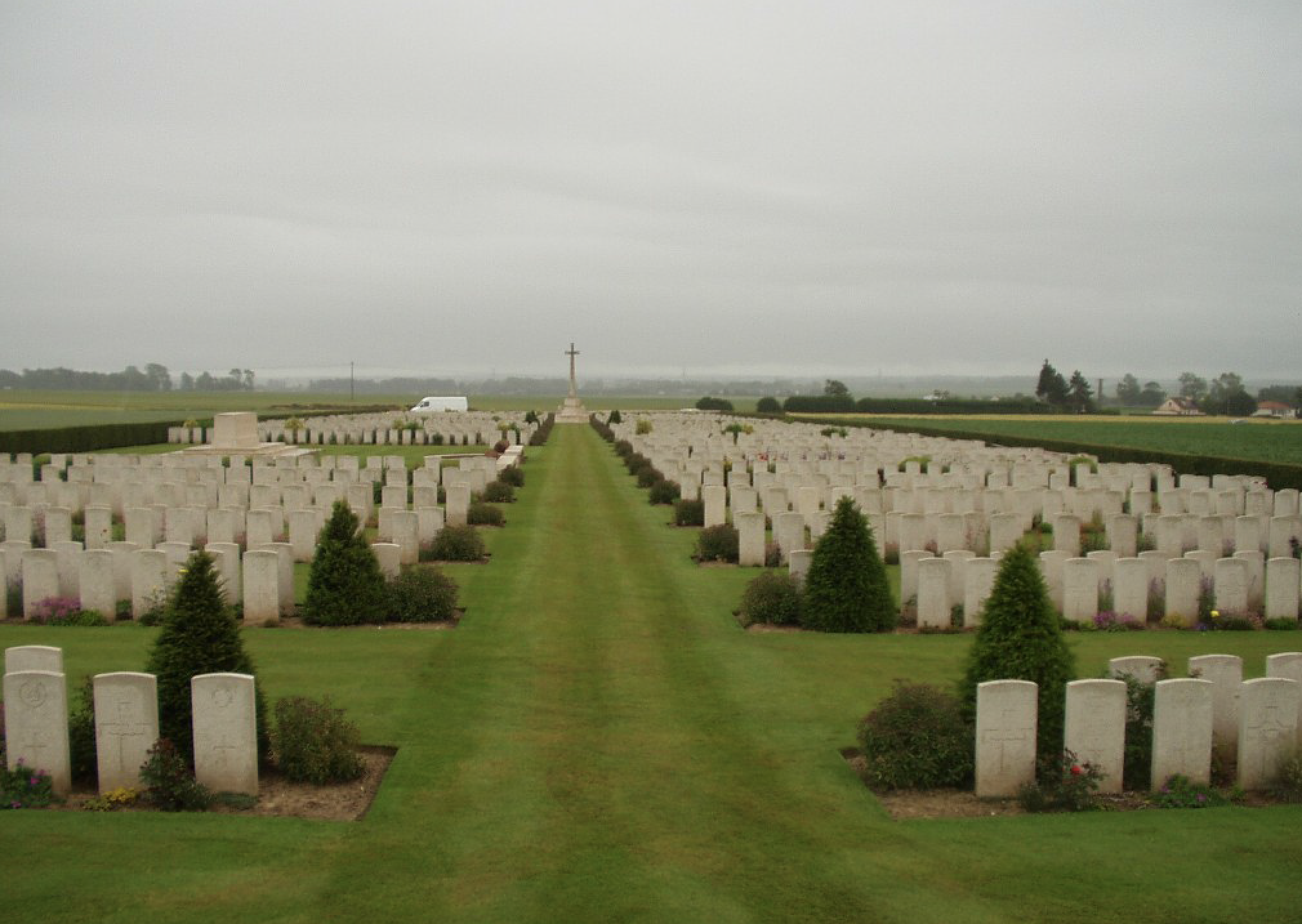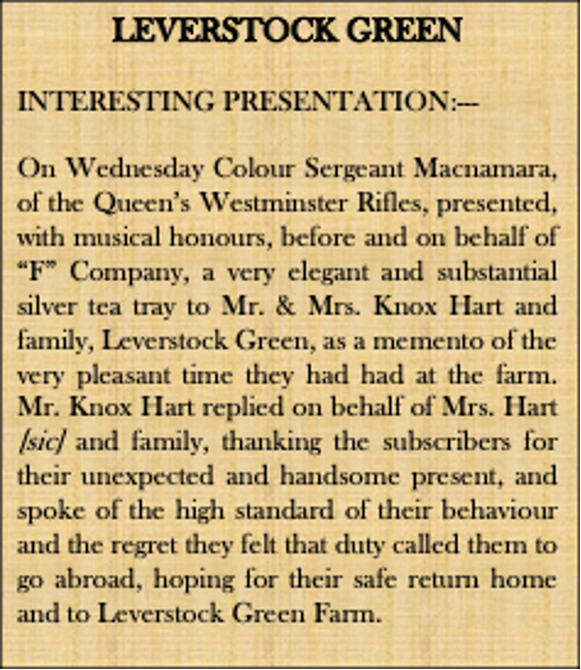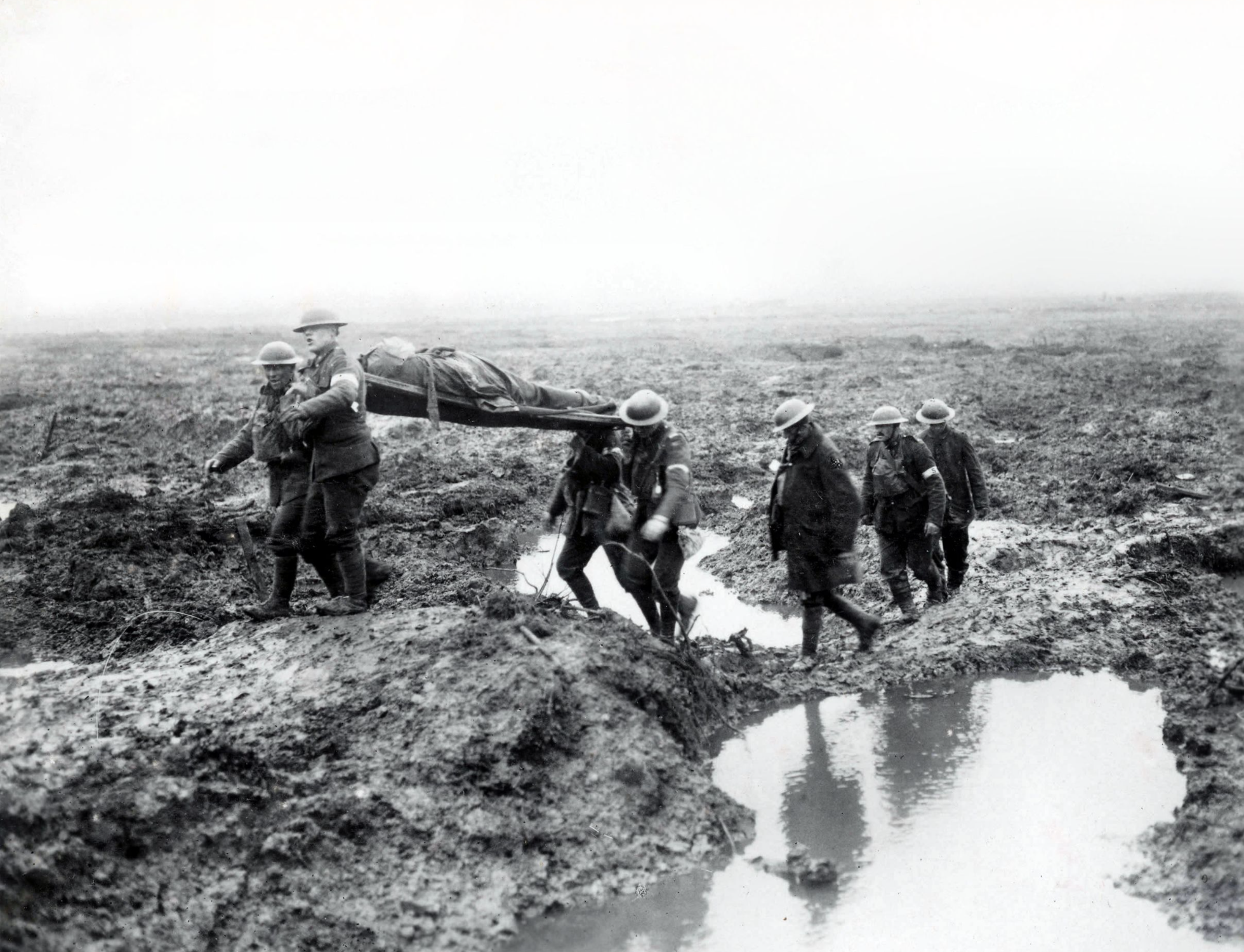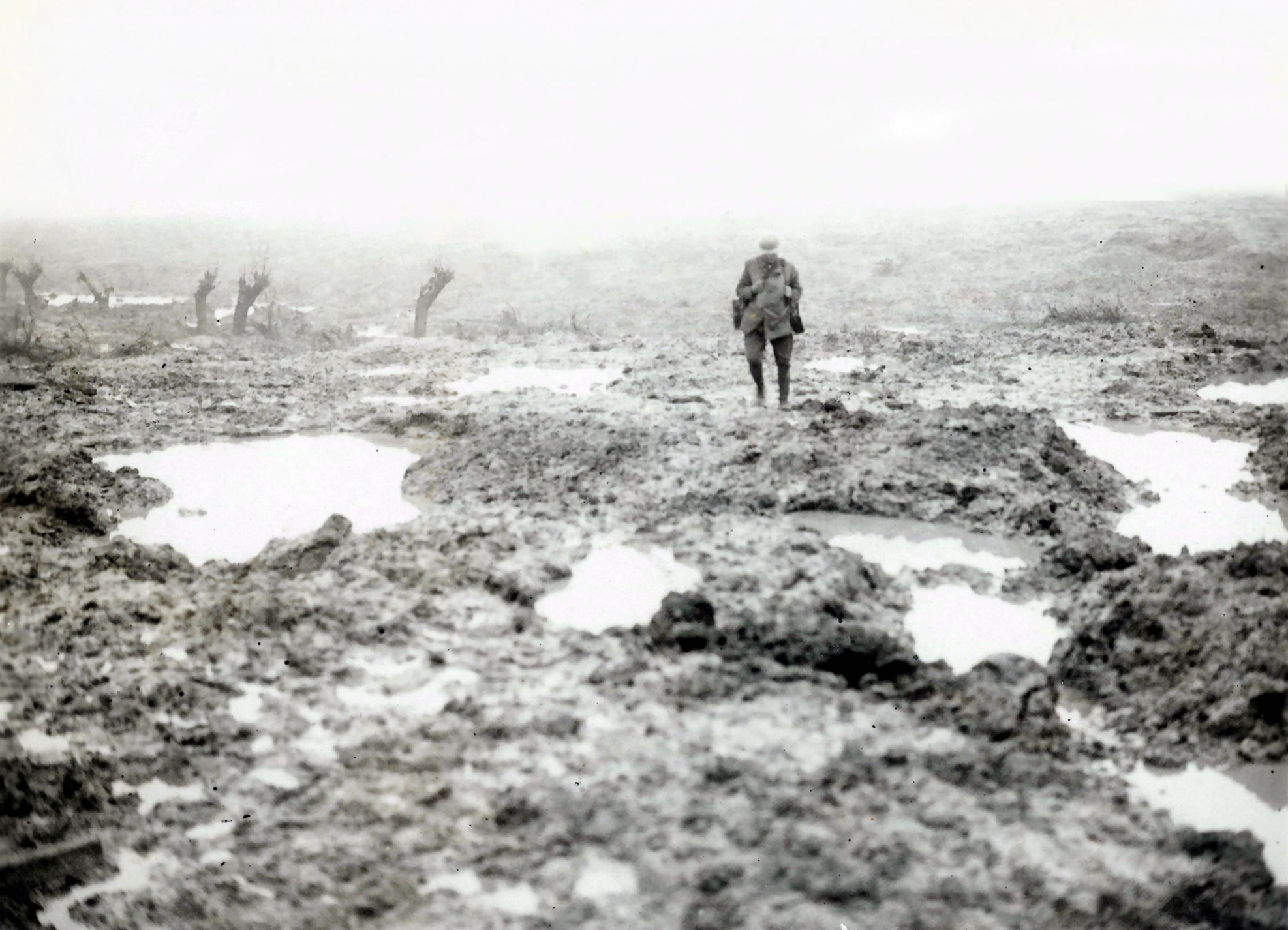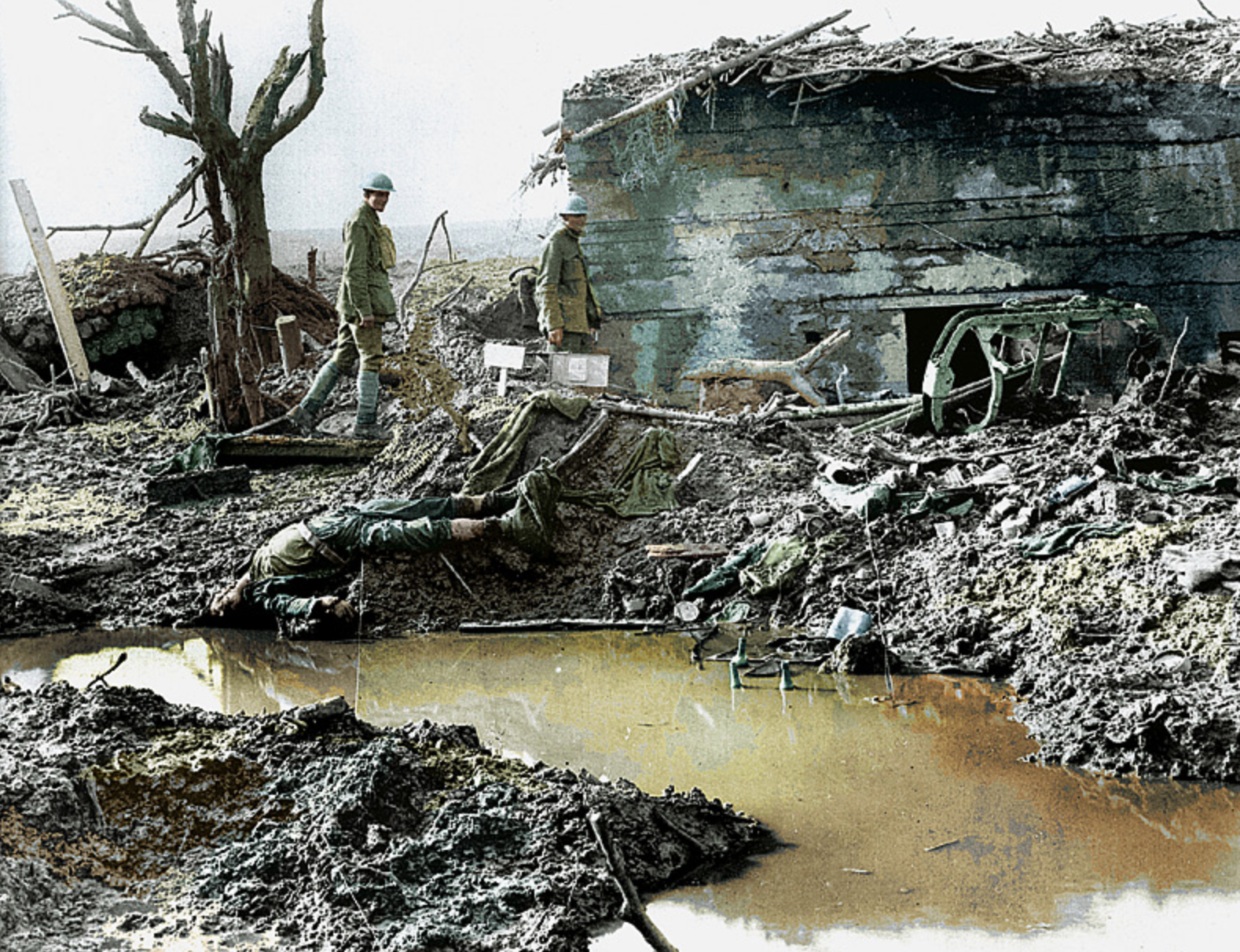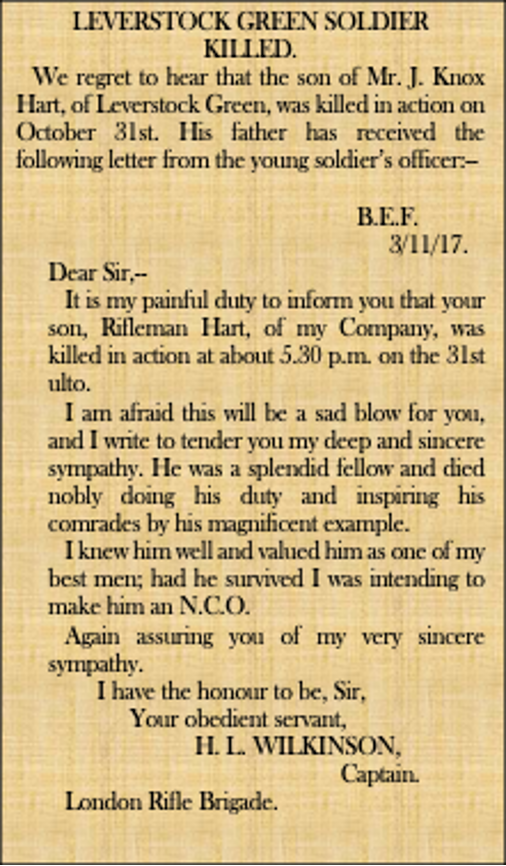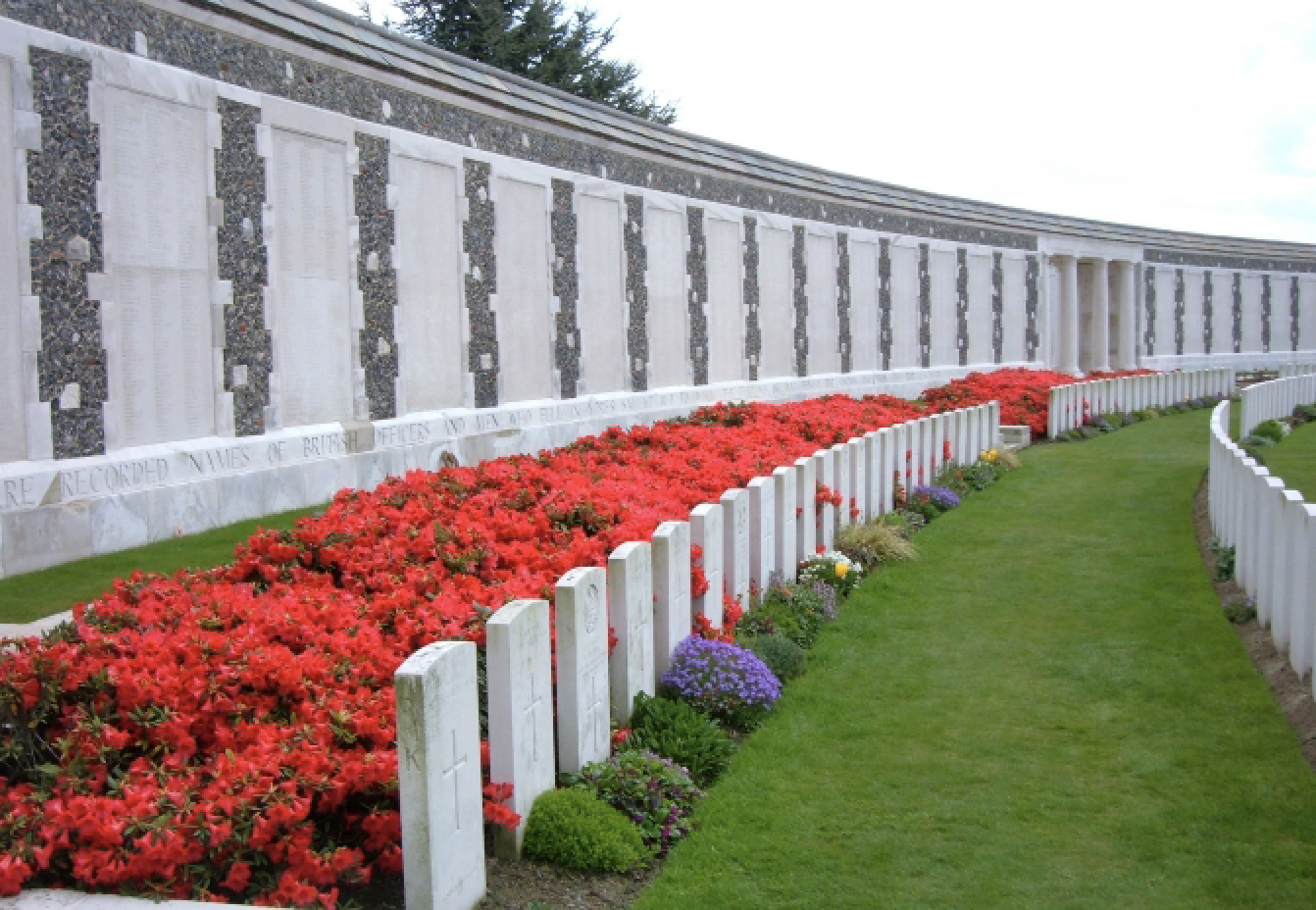Fallen in October 1917:
John Donovan
Albert Franklin
George Garner
Albert Spurr
Sidney Herbert Sear
Herbert Christmas
Sidney Charles Reeves
Archibald Claude Bates M.C.
Albert Ernest Widdows
John William Spurr
James Knox-Hart
JOHN DONOVAN
14114 Private
1st Bn., Bedfordshire Regiment
Killed in Action Tuesday, 9th October 1917
Remembered with Honour, Tyne Cot Memorial, West Vlaanderen, Belgium, Panel 48 to 50 and 162A
John Donovan was born in Poplar, Middlesex on Christmas day, Sunday, 25th December 1892 and baptised at All Hallows Church in East London Docks on Sunday, 8th January 1893. He was the only son born to John Donovan and Sarah Anne Martin who had four children together: Mary Elizabeth, Sarah, John and Elizabeth.
It is not known when John came to Hemel Hempstead, but it is likely to have been after 1896 when he found work with John Dickinson & Co. Limited in Apsley Mills. He was living on Cowper Road in Boxmoor in 1911 as a ‘Boarder’ at the home of a retired millhand, Henry Lovegrove and his wife Mary. John worked as a ‘Die Stamper’ with Dickinsons at the time.
On the outbreak of war, John was amongst the first volunteers from Hemel Hempstead and at the start of September he joined the Colours. He attested at Hemel Hempstead, giving his residence as Canning Town, East London where his parents lived and enlisted with the Bedfordshire Regiment.
He immediately went to the newly opened Ampthill Park training establishment and on completion of his basic training, he was posted to the 1st Battalion Bedfordshire Regiment and sent overseas. John disembarked at Le Havre in France on the 2nd February 1915 and six days later joined his unit in billets at Bailleul.
John was soon in action in the trenches and in April 1915, he fought in the Battle of Hill 60 south of Ypres. This was a real baptism of fire which began with the detonation of two massive mines. These were in underground tunnels which had been excavated by Northumbrian and Welsh miners before the attack. The explosions were followed by the attack and the Hill was captured by the British.
However, it was retaken after the Germans mounted an ‘annihilation bombardment’, persistent machine gun attacks and bombing raids, which all proved costly. During early May both sides deployed poison gas against their respective positions, again causing many casualties.
Between the 18th and 21st April the 1st Bedfordshires suffered over 100 men killed and several hundred more wounded. At the conclusion of the battle on the 7th May they had incurred a further 293 casualties. Miraculously, John survived the engagement.
For the rest of the year John spent his time in the trenches with his colleagues whilst the 15th Brigade and the Battalion were reinforced and strengthened ready for 1916.
March 1916 saw a move for the 1st Bedfordshires, with the 5th Division to take over a section of front line between St Laurent Blangy and the southern edge of Vimy Ridge, in front of Arras. This was a lively time, with many trench raids, sniping and mining activities in the front lines.
When the Franco-British offensive opened at the Somme on the 1st July, John and his comrades were enjoying a period of rest and re-fit and in GHQ Reserve. However, this restful time was not destined to last and between mid-July and early October he fought in the following actions and battles: High Wood, Guillemont, Flers-Courcelette, Morval, and finally Transloy. These were all phases of the Battles of the Somme and John survived unscathed.
On the 5th October the 1st Bedfordshire Regiment left the Somme and moved to hold a quieter line near Festubert. There was a constant threat from enemy artillery and sniper fire, but in comparison with the Somme it was a relatively tranquil period that lasted until March 1917.
John next went into action at the Battle of Arras and fought at Vimy, La Coulotte and the Third Battle if the Scarpe before the Battalion was relived in September and sent to Flanders. This move was to support the ongoing allied offensive at the Third Battle of Ypres and John was soon in action again, fighting at Polygon Wood in September and then Broodseinde and Poelcapelle in early October.
It was at the Battle of Poelcapelle that John’s good fortune finally ran out. The battle was fought in very poor weather across an area which had been turned to swamp in some places by the heavy rain.
When the attack started, the allied troops had already negotiated miles of mud just to reach the start lines. In an exhausted state they jumped off at 5.20 am to be met with heavy machine gun and small arms fire from the well-entrenched Germans.
The Battalion War Diaries recorded the attack in a matter-of-fact manner: “9 Oct 1917 15th Bde attacked POLDERHOEK CHATEAU with 1/Norfolks & 16/R.War R. The attack failed & they withdrew to their jumping off positions about 250 yds W. of CHATEAU”.
All Hallows, East India Dock Road, London where John was baptised (Photo: Alan Russell)
Ampthill Park where John trained with the Bedfords (Photo: http://www.worldwar1luton.com)
The battlefield at Poelcappelle during and just after the war (Photos: IWM and CWGC)
John Dickinson & Co. Limited War Memorial, Apsley (Photo: Traquair Photography)
Tyne Cot Memorial, West Vlaanderen, Belgium, (Photo: CWGC)
This does not describe the horror of the action, the level of casualties inflicted or the fact that a significant number of wounded men were stranded on the battlefield, unable to be rescued and under enemy sniper fire, in the mud and rain. Accounts relate untended wounded men being found up to four days later.
John was one of the men killed in the initial attack and he died on Tuesday, 9th October 1917. He had managed to survive two-and-a-half years of some of the most dreadful fighting on the Western Front before he finally fell.
He was commemorated on the John Dickinson & Co. Limited War Memorial at Apsley. His name is recorded incorrectly as ‘Donavon’ on the memorial.
John is Remembered with Honour on Tyne Cot Memorial, West Vlaanderen, Belgium, Panel 48 to 50 and 162A.
He was 24 years old when he died.
John was entitled to the 1914-15 Star, the British War Medal and the Allied Victory Medal.
ALBERT FRANKLIN
203461 Private
H.Q. Coy. 1/4th Bn., Duke of Wellington's (West Riding Regiment)
Killed in Action Tuesday, 9th October 1917
Remembered with Honour, Tyne Cot Memorial, West Vlaanderen, Belgium, Panel 82 to 85 and 162A
Albert Franklin was born in Hemel Hempstead in January 1897 and baptised a month later on Sunday, 21st February at St. Paul’s Church. He was the third child and second son of Frederick George James Franklin and Annie (Ann) Thorogood who had a large family of eight children together. Albert’s siblings were: Lily, George, Sidney, Edward, Leonard, Dorothy and Charles. His older brother George served with the Army Service Corps in East Africa during the war. He was discharged from the army in 1917 suffering from “malaria, delusions and temporary insanity”, but happily made a full recovery.
Albert’s father Frederick worked as a ‘Brickmaker’ for many years and the family lived at 14 Austin’s Place just off the High Street where the children all grew up. Just before the War, Frederick and Annie moved the family to 1 New Buildings, Chapel Street just around the corner.
When Albert started work in 1910, it was as a ‘Printer’s Feeder’, possibly with Dickinsons in Apsley Mills, but he left to work as a ‘Gardener’ at Highfield House in Hemel Hempstead before he went to war.
On the outbreak of war, Albert was not old enough to join the Colours, but six months after his eighteenth birthday in 1915 he enlisted, no doubt calculating that by the time he completed his basic training he would be nineteen and eligible for overseas service.
He attested at Hemel Hempstead in July and joined the Duke of Wellington’s (West Riding Regiment) and was immediately posted for basic training. A year after enlisting, Albert was sent to France and joined the 1/4th Battalion the Duke of Wellington’s near Contay on the 26th June 1916, as part of a draft of 250 men.
As a teenager, Albert had been an early member of the Boy Scouts in Hemel Hempstead. It was this experience that meant he was detailed to the ‘Scout Section’ with ‘D’ Company under the command of Lieutenant P. G. Bales. This was a role which put Albert in real danger as he was often in advanced and exposed positions gathering intelligence. German snipers constantly watched out for ‘Scouts’ and many died as a result.
Only five days after arriving, Albert went into action when the battalion was in support at the start of the Battle of Albert, the opening action of the Somme Offensive. During the next few days the Duke of Wellington’s came under heavy enemy shelling as it provided “…carrying parties for ammunition and stretcher bearing”. Sixty-two men were casualties during these initial actions.
During the next three months Albert fought in The Battles of Bazentin Ridge, Pozieres and finally, Flers-Courcelette in September.
In early 1917 the Duke of Wellington’s moved to Flanders and for the first part of the year were engaged in the abortive Operation Hush on the Flanders coast. By October Albert was with his unit in the vicinity of Ypres as the Duke of Wellington’s prepared to fight at Poelcapelle.
In extremely poor weather conditions, the Battalion gave support as the attack began and soon it was incurring significant casualties. The assault stalled and by the end of the second day there had been no progress due to extremely heavy enemy machine-gun and small arms fire. This along with the difficult weather conditions ultimately resulted in failure of the attack.
Albert was killed on the first day of this action, Tuesday, 9th October 1917.
The month following his death, Albert’s parents received two letters from officers in the Duke of Wellington’s, both of which were published in the Hemel Gazette. (see extract)
Lieutenant Bales was responsible for the Battalion War Diaries and he would later write an excellent regimental history of the 1/4th Duke of Wellington’s.
Albert is Remembered with Honour on Tyne Cot Memorial, West Vlaanderen, Belgium, Panel 82 to 85 and 162A.
He was only 20 years old when he died.
Albert was entitled to the British War Medal and the Allied Victory Medal.
Pte. Albert Franklin c1915 (Photo: The Hertfordshire, Hemel Hempstead Gazette and West Herts Advertiser)
Highfield House, Hemel Hempstead 1911 and today, where Albert was a Gardener (Photos: Public Domain and Traquair Photography)
Extract from The Hertfordshire, Hemel Hempstead and West Herts Advertiser 17th Nov. 1917
Tyne Cot Memorial, West Vlaanderen, Belgium, (Photo: CWGC)
GEORGE GARNER
3/8087 Private
1st Bn., Bedfordshire Regiment
Killed in Action Tuesday, 9th October 1917
Remembered with Honour, Tyne Cot Memorial, West Vlaanderen, Belgium, Panel 48 to 50 and 162A
George Garner was born in Boxmoor, Hertfordshire on Saturday, 11th April 1885, the fourth child born to George Garner and Ann Merrington. George had seven siblings; Kate, Lizzie, Rose, and William all older and Clara, Daisy and Ethel. Ethel died aged one in 1895 and the following year, George’s mother Ann also passed away when George was only ten-years-old. George’s father married again in 1898 to Florence Annie Barber (nee Harvey) and George immediately gained four step-siblings; William, Florence Annie, Henry Arthur and Lilian. Two more half-sisters followed, Gertrude Mabel in 1900 and Ellen Elsie in 1902. Another of George’s younger sisters, Daisy, died in 1907 aged eighteen.
George went to Boxmoor JMI School in February 1892 and whilst there, successfully completed five of the seven ‘standards’. He left the school on the 30th January 1898 and the reason for his departure is recorded as “Living in London”.
The facts are unclear, as research has not uncovered any record of George or his family living in London, but his step-mother Florence was from Walworth. It is possible that his father was working in London where he may have met widow Florence at around this time. Indeed, they were married towards the end of 1898 back in Hemel Hempstead.
By 1901, George aged sixteen, was working as a ‘Sawyer’ in Fosters Sawmills on Kingsland Road. Five years later, to supplement his income, he enlisted with the Militia joining the 4th Battalion Bedfordshire Regiment. At the time he was living with his sister Lizzie and brother William at 5 Woodbine Cottages, George Street in Berkhamsted.
At attestment, George is described as follows: "Apparent Age 20 years an10 months; Height 5 feet 10 inches; Weight 131 lbs; Chest Measurements 36 inches Expansion 2 ½ inches; Complexion Fresh; Eyes Brown; Hair Lt. Brown."
He served for just over two of the four years he signed up for and bought his discharge in April 1908 for the payment of £1.0.0. It seems he did not take to military service and his charater was adjudged "inefficient" on his departure.
By the time of the next census in 1911, he had moved to Watford and was boarding with the Collins family on Sutton Road, close to Watford Junction station.
He was working as a ‘Wireman’ for the National Telephone Company. This was a British telephone company formed in 1881, which brought together smaller local companies in the early years of the telephone. It was taken over by the General Post Office (G.P.O.) in 1912.
Following the outbreak of war, George's previous military service meant that he was immediately mobilised and he attested at Watford in September 1914 and enlisted with his old regiment. He was initially posted to the 3rd (Reserve) Battalion to train before being transferred to the newly formed 7th (Service) Battalion, part of ‘K2’ Lord Kitchener’s second call to arms which saw 100,000 men enlist in September 1914.
The ‘Shiney Seventh’ as it was known became part of the 54th Brigade in the 18th (Eastern) Division and George went with it to France on the 26th July 1915.
The year was relatively quiet compared with what was to come in 1916, though George did see action in the trenches and the Battalion suffered some casualties.
On the 1st July 1916 George fought in the Battle of Albert, the opening attack of the Somme Offensive and then two weeks later, at the Battle of Bazentin Ridge where he was amongst the wounded. He was taken out of the line and evacuated to a base hospital for treatment and subsequently transferred back to England to recover.
When he was fit for service again in early 1917, he returned to the Front, but this time to Belgium and the 1st Battalion Bedfordshire Regiment where he was assigned to ‘C’ Company.
George then fought in the Battle of Arras, specifically at the attack on La Coulotte in April and the Third Battle of the Scarpe in May.
Then in October 1917, in the vicinity of Ypres, he fought at the Battle of Poelcapelle. This action was a failure due to staunch resistance from a well-entrenched enemy, enfilading with heavy machine gun fire and combined with very poor weather conditions. As a result, over two days the Battalion incurred heavy casualties and sadly George was one.
He was killed on Tuesday, 9th October 1917.
His sister, Lizzie Foskett, received a letter of sympathy form his C.O., the contents of which were published in the Hemel Gazette just over a month after George died. (see extract)
2nd Lieutenant Joseph Thornton Laughton, who sent the letter, was wounded the day after George died. He was later fatally wounded and died on the 29th September 1918, just over a month before the War ended. He was only 22 years old.
Foster's Sawmills on the Grand Junction Canal, Boxmoor, George's first job (Photo:https://www.hertsmemories.org.uk)
The National Telephone Company Logo in 1911(Photo: Oosoom)
Extract from The Hertfordshire, Hemel Hempstead Gazette and West Herts Advertiser 17th Nov.1917
Tyne Cot Memorial, West Vlaanderen, Belgium, (Photo: CWGC)
George is Remembered with Honour on Tyne Cot Memorial, West Vlaanderen, Belgium, Panel 48 to 50 and 162A.
He was 32 years old when he died.
George was entitled to the 1914-15 Star, the British War Medal and the Allied Victory Medal.
ALBERT SPURR
17924 Private
1st Bn., Bedfordshire Regiment
Killed in Action Tuesday, 9th October 1917
Remembered with Honour, Tyne Cot Memorial, West Vlaanderen, Belgium, Panel 48 to 50 and 162A
Albert Spurr was born in Hemel Hempstead, Hertfordshire in 1886 and baptised on the 27th August at St Paul’s church in the same year. He was born to George Spurr and Sarah Ann Shepherd who had nine children together. They were: William, George, Albert, John Thomas, Arthur, Alice Louisa, Annie and Walter. Arthur died when he was eight months old in 1891 and Annie died aged fourteen months in 1898. Another unknown child died in infancy.
Two of Albert’s brothers also lost their lives in the Great War, George in November 1917 only three weeks after Albert and John, who was killed in an accident in July 1918. Their biographies also appear on this site.
The Spurr family lived on Cherry Bounce, Hemel Hempstead for over thirty years, before moving into 86 High Street just around the corner by the end of the war. Albert’s father George was a ‘Farm Labourer’ for most of his working life, but when Albert started work it was as a ‘Draper’s Porter’.
He then found employment with John Dickinson & Co. Limited in Apsley Mills as a ‘Millhand’, but he left this position before the start of the war. When he married, he gave his occupation as ‘Packer’ but no information about his employer.
Following the outbreak of war, Albert attested at Watford in September 1914 and enlisted with the Bedfordshire Regiment. He was immediately sent for training at Felixstowe and in early February 1915 he was granted some home leave.
He returned to Hemel Hempstead where, on Wednesday, 10th February, Albert married his sweetheart Rose Elizabeth Bradshaw at St Paul’s Church on Queen Street. His younger brother John was best man at the ceremony.
Rose was a native of Berkhamsted and had been in domestic service since she left school. She and Albert met when she came to work in a private house known as ‘Eastleigh’ on Marlowes in Hemel Hempstead.
Shortly after the marriage Albert was posted overseas to the 2nd Battalion Bedfordshire Regiment, disembarking in France on the 9th June 1915. He arrived with the Battalion four days later as part of a draft of 100 men and almost immediately he was thrown into the fray at the Second Action at Givenchy.
The next few months for Albert meant gaining valuable experience in the trenches before the next major action at the Battle of Loos in September.
Fighting here and around Hulluch continued until the 1st October and the 2nd Bedfordshires suffered heavy casualties as recorded in the War Diaries: “Casualties of other Ranks during 25.9.15 - 1.10.15. KILLED 45 MISSING 40 WOUNDED 270 - 355.”
It is not known if Albert was wounded during the action at Loos or whether he was a casualty at the Somme in 1916, but at some point, he was evacuated to England for treatment and to recover.
When he was fit again, he returned to the Front, this time posted to the 1st Battalion Bedfordshire Regiment. Research does not reveal exactly when Albert returned, but what is known is that in October 1917, he was with the 1st Bedfordshires fighting in the Third Battle of Ypres.
At the Battle of Poelcapelle, the 1st Bedfordshires were part of a futile attack on heavily entrenched German positions and came under withering machine-gun fire.
The very poor weather and atrocious ground conditions meant that the attacking soldiers were easy targets and the assault was brought up short. The subsequent retreat to the jumping off points left many wounded men isolated on the battlefield, subject to enemy sniping as well as suffering the mud and rain.
The War Diary simply recorded the following: “… Total casualties - 4 officers Killed, 6 wounded, 35 [Other Ranks] Killed, 97 wounded, 4 missing...” Albert was one of the unfortunate men who fell during the two day battle.
Cherry Bounce where the Spurr family lived for many years (Photos: Old OS Maps and Barbara Norman)
St. Paul’s Church, Queen Street where Albert and Rose married (Photo: http://www.hertfordshire-genealogy.co.uk)
Part of the battlefield at Poelcapelle where Albert fell (Photo: CWGC)
Tyne Cot Memorial, West Vlaanderen, Belgium, (Photo: CWGC)
He was killed on Tuesday, 9th October 1917.
Albert’s wife Rose did not remarry after his death and she passed away in Hemel Hempstead in 1969 aged eighty-six.
Albert is Remembered with Honour on Tyne Cot Memorial, West Vlaanderen, Belgium, Panel 48 to 50 and 162A.
He was 31 years old when he died.
Albert was entitled to the 1914-15 Star, the British War Medal and the Allied Victory Medal.
SIDNEY HERBERT SEAR
61497 Private
4th Field Ambulance, Royal Army Medical Corps
Killed in Action Wednesday, 10th October 1917
Remembered with Honour, Canada Farm Cemetery, West Vlaanderen, Belgium, Grave III. D. 17.
Sidney Herbert Sear was born in Watford, Hertfordshire on Monday, 26th October 1891 the youngest child of Frederick Sear and Louisa Beckley. He had three older siblings who were: Louisa Maud, Elsie Gertrude and Frederick William George. His mother Louisa died in March 1908 aged forty-six and she is buried in Heath Lane Cemetery, Hemel Hempstead.
Sidney’s father Frederick was a ‘Draper’ and it was through his job that he met Sidney’s mother Louisa who worked in a drapery store in Hemel Hempstead. Sidney’s Grandparents were also both wealthy businessmen; William Sear was a successful builder, whilst George Beckley ran his own dairy.
When Sidney’s parents married in London in 1884, his father Frederick was working in Kettering in Northamptonshire and by the time of Sidney’s birth the family had moved to Watford. The Sears then moved back to Hemel Hempstead and lived at 17 Marlowes, close to both sets of Grandparents. When Sidney completed his initial schooling in Hemel Hempstead, he was sent to Watford Grammar School.
He entered the school on 6th January 1902 and joined his brother Frederick who was already a pupil. When he left school in 1906, young Sidney was apprenticed to the drapery trade and by 1911, when he was nineteen, he was working as an ‘Outfitter’ for one Cecil Cook a Draper in Lewisham.
Sidney joined the Colours in August 1915 when he attested in London and enlisted with the Royal Army Medical Corps (RAMC). The RAMC was not a fighting force but its members saw the full horror of the war and it must be remembered that Warrant Officers and men performed their duties unarmed. The Corps lost 6,873 personnel; of these an estimated 470 officers and 3,669 other ranks were either killed in action or died of wounds.
In December 1915 Sidney was sent overseas to Egypt just as the evacuation from the Dardanelles campaign was ending. It is not known which unit he travelled with or how long he spent in Egypt, but on his return to Europe he was posted to the 4th Field Ambulance, which came under the orders of the Guards Division. The Field Ambulance was not a vehicle but the name given to a mobile front line medical unit. Each Division had three field ambulances assigned to it, comprised of ten officers and 224 men in total.
The Guards Division fought at the Somme, in the Battles of Flers-Courcelette and Morval in 1916, before moving to Belgium for the Third Battle of Ypres in 1917. On the 7th October, Sidney was one of ninety-eight men sent into a forward position as a bearer division to assist with the evacuation of the sick and wounded in the impending assault.
The attack began on the 9th October at the Battle of Poelcapelle and for two days the Division incurred significant casualties. It was on the second day that Sidney fell as efforts continued to deal with the increasing number of killed and wounded soldiers.
Sidney was killed on Wednesday, 10th October 1917, the only man in his unit to die in action on that day.
He was commemorated on the War Memorial Plaque in Marlowes Baptist Church (now Carey), and on the plaque in Watford Grammar School for Boys.
Sidney is Remembered with Honour in Canada Farm Cemetery, West Vlaanderen, Belgium, where he is interred in Grave III. D. 17.
He was 26 years old when he died.
Sidney was entitled to the 1914-15 Star, the British War Medal and the Allied Victory Medal.
Watford Grammar School for Boys 1927, Sidney's Alma Mater (Photo:https://www.britainfromabove.org.uk)
Section of a typical R.A.M.C. Field Ambulance in WW1 (Photo:https://www.longlongtrail.co.uk)
War Memorial Plaque, Carey Baptist Church, Marlowes, Hemel Hempstead (Photo: Kathleen McLeod)
War Memorial Plaque Watford Grammar School for Boys (Photo: IWM)
Canada Farm Cemetery, West Vlaanderen, Belgium, (Photo: Traquair Photography)
Pte. Sidney Herbert Sear’s Headstone (photo: Mark Banning)
HERBERT CHRISTMAS
42100 Private
7th Bn., Lincolnshire Regiment
Killed in Action Friday, 12th October 1917
Remembered with Honour, Tyne Cot Memorial, West Vlaanderen, Belgium, Panel 35 to 37 and 162 to 162A .
Herbert Christmas was born in Hemel Hempstead in 1881 to Walter Christmas and Frances Ann Reeve. He had an older brother Walter Francis and a younger one, Ernest John. Herbert’s father Walter owned a coach building works originally started by his older brother Thomas in 1870. He was heavily involved in the introduction of the motor car to Hemel Hempstead and ran a front page advertisement for his business in the Hemel Gazette for many years.
Herbert worked for his father’s business and became a ‘Carriage and Motor Body Builder’. He was initiated into the King Henry the Eighth lodge of the Freemasons in May 1910 along with his two brothers. The Lodge contained many of the great and good of Hemel Hempstead citizenry at the time including: Lovel Smeathman, Alderman and ex-Mayor; Arthur East, timber merchant; Francis Bailey of Boxmoor Iron Works and the Reverend Augustus Hollis of St. John the Baptist church in Great Gaddesden.
Herbert is recorded on the 1911 census as being in ‘Fair’ health, possibly he suffered from an underlying medical condition which was not debilitating, but may have affected his fitness for front line service.
He was called up under the Military Service Act and attested at Hemel Hempstead on 31st March 1916, enlisting with the Royal Flying Corps (R.F.C.) and was posted to train with the Balloon Section as a 2nd Air Mechanic.
This was a specialist unit in the Army and part of the nascent R.F.C. which required specialist training. This involved techniques in strict co-ordination and a high level of discipline, since the balloon on the ground could be an exceedingly dangerous object if not kept under full control at all times. Recruits tended to come from technical occupations similar to Herbert’s work as a coach builder.
The first British ‘Kite’ Balloon Section arrived on the 8th May 1915 in the Aubers Ridge Sector, France. Kite balloons were usually located three miles behind the front lines at a distance of between twelve and fifteen miles from each other.
At these bases the crews would await suitable wind and weather conditions so the observation balloons could ascend bearing a tethering cable and a telephone line. They operated at altitudes of 3,000 to 4,000 feet and sometimes a group of three or four balloons were sent aloft simultaneously.
These operating conditions normally took the tethered balloons clear of effective small arms and artillery fire, however as the war progressed, German air aces targeted, not only the balloons, but the men on the ground.
Due to the paucity of Balloon Sections, and the constant need for the vital function they performed, the troops manning them routinely spent long periods in the War Zone. They did not benefit from the relief patterns of the infantry. The observers who ascended in the balloons came to be known as "Balloonatics".
It is not known where in France Herbert served, but he was posted to 5 Balloon Section and went overseas in 1916. His service with the R.F.C. ended when he was transferred to the 7th Battalion Lincolnshire Regiment on the 2nd September 1917 and went into the front line near Ypres.
He was transferred as part of an effort to rebuild depleted forces after the Arras Offensive and as the Third Battle of Ypres entered its final stages. The 7th Lincolnshires had lost a third of its fighting strength in the latter stages of the Battle of Arras and Herbert joined with 148 other drafts on the 23rd September 1917.
The Battalion moved to Belgium on the 4th October and six days later Herbert was in the trenches for the first time in the war. He fought in the First Battle of Passchendaele.
On the 12th October the battle began and the Battalion jumped off at ‘zero’ hour, 4.25am. Within three hours of desperate fighting, the final objectives were reached and the rest of the day was spent digging in to consolidate the positions won.
The gains however, came at a heavy cost right from the outset and the Battalion War Diary records that over 240 men were killed, wounded or missing. Herbert was one of the unfortunate soldiers posted missing and presumed killed.
He died on Friday, 12th October 1917 fighting in his first serious action of the War.
Passchendaele is estimated to have cost the lives of 275,000 British soldiers and photographs of the devastation, particularly the treacherous conditions of the battlefield, have helped to shape public memory of the Western Front.
Herbert had a sweetheart in Hemel Hempstead, Louisa Isobel Monzani, and they had intended to marry. Indeed, on Sunday, 11th February 1917, the Banns were read at St Paul’s Church in the town whilst Herbert was overseas. However, the match did not take place as Herbert was killed without ever having returned home. Louisa never married and she died in Hemel Hempstead in 1944 aged fifty-seven.
Herbert was commemorated on the War Memorial Plaque in St. Paul's Church on Queen Street. Sadly this plaque was lost when the church was demolished in 1984 and has been replaced by a Memorial Scroll in the new church in Highfield.
Herbert is Remembered with Honour on Tyne Cot Memorial, West Vlaanderen, Belgium, Panel 35 to 37 and 162 to 162A.
He was 36 years old when he died.
Herbert was entitled to the British War Medal and the Allied Victory Medal.
Walter Christmas' front page advertisement (Image: The Hertfordshire, Hemel Hempstead Gazette and West Herts Advertiser 5th Sep. 1914)
A Kite or Observation Balloon with Ground Crew (Photo: www.thevintagenews.com)
A deadly quagmire on the battlefield at Passchendaele (Photo: The Times Newspaper)
Extract from The Hertfordshire, Hemel Hempstead Gazette and West Herts Advertiser 24th Nov. 1917)
St. Paul's Church Memorial Scroll (Photo: Traquair Photography)
Tyne Cot Memorial, West Vlaanderen, Belgium, (Photo: CWGC)
SIDNEY CHARLES REEVES
TF/238045 Private
12th Bn., Middlesex Regiment
Killed in Action Wednesday, 17th October 1917
Remembered with Honour, Tyne Cot Memorial, West Vlaanderen, Belgium, Panel 113 to 115
Sidney Charles Reeves was born in Hemel Hempstead, Hertfordshire in July 1886, the second child born to William Reeves and Mary Ann Read. He had four siblings who were: Percy William, Rosina Mary, Lilian Annie and Stanley James.
His father William was a ‘Master Baker’ and had shops in Hemel Hempstead at 41 Herbert Street and at 1 Apsley End. The Reeves family lived at ‘over the shop’ in Herbert Street and this is where Sidney grew up and learned his trade as a ‘Baker’. He moved to Aspley sometime after 1901 to work initially for another baker, William Marshall. It appears that William Reeves acquired William Marshall’s business because in 1915 it was being managed by Sidney on his behalf.
Sidney’s job as a Baker was designated a ‘starred’ occupation on the outbreak of war and meant that he was not immediately obliged to enlist. When the Group (Derby) Scheme was introduced in 1915 he attested at Hemel Hempstead in December and enlisted with the 4th Battalion Essex Regiment. On the promise of future service and due to his ‘starred’ status, he was granted exemption and transferred to the Army Reserve.
He was called up a year later on the 29th January 1917 and was posted for basic training with the 4th Essex. He went to France five months later on the 28th May and was transferred to the 9th Battalion Essex Regiment. His time with the 9th Essex was short and before he had seen action he was again transferred. This time he went to the 12th Battalion Duke of Cambridge’s Own (Middlesex) Regiment, joining his new comrades on the 20th June 1917.
He arrived at Monchy-au-Bois, west of Arras as part of a draft of 350 men to help rebuild the Battalion’s fighting strength. He was assigned to No.3 Platoon, ‘A’ Company and for the rest of the month he trained with his new comrades. At the beginning of July, the 12th Middlesex moved to Belgium and took up positions to the west of Ypres in preparation for the next big allied offensive.
At the end of July and in early August, the 12th Middlesex provided support for the early engagements of the Third Battle of Ypres. On the 18th August, Sidney saw his first serious action when he fought in the Battle of Langemarck. He came through unscathed and then had regular spells in the trenches until mid-October when his luck ran out.
Sidney was killed on Wednesday, 17th August, by enemy shell fire, when in the trenches at Canal Bank near Ypres.
Following his death his sister Rosina acted as his executor at home in Hemel Hempstead for all War Office correspondence. This included the return of Sidney’s effects, which were send initially to solicitor Lovel Smeathman, who passed them on to the family. The list of his possessions included: “Testament (Bible), Diary Pouch, Wallet, Letters, Photos, Cards, 2 Receipts, Registration Card, Birth Certificate”. No doubt these were items typically carried by most soldiers.
Sidney had also bequeathed £330 17s 6d to his father William and sister Rosina, a not insubstantial amount, equivalent to approximately £16,000 today.
His father also received letters of sympathy from his platoon officer and a close friend in his Company, details of which were published in the Hemel Gazette. The letter from his friend paints a picture of Sidney’s character and popularity. (see extract)
It is not known who Sidney’s young lady was, but they no doubt intended to marry on his return from the War. Private Richardson survived the conflict.
Sidney was commemorated on the memorial plaque at Marlowes Baptist Church where he had been a member of the congregation.
Sidney is Remembered with Honour on Tyne Cot Memorial, West Vlaanderen, Belgium, Panel 113 to 115.
He was 31 years old when he died.
Sidney was entitled to the British War Medal and the Allied Victory Medal.
Duke of Cambridge’s Own (Middlesex) Regiment cap badge WW1 (Photo: Public Domain)
Extract from The Hertfordshire, Hemel Hempstead Gazette and West Herts Advertiser 3rd Nov. 1917
Tyne Cot Memorial, West Vlaanderen, Belgium, (Photo: CWGC)
BATES ARCHIBALD CLAUDE M.C.
Lieutenant
6th Bn., Northamptonshire Regiment
Died of Wounds Saturday, 20th October 1917
Remembered with Honour, Mendinghem Military Cemetery, West-Vlaanderen, Belgium, VII. D. 48.
Archibald Claude Bates, known as Archie, was born in Hemel Hempstead on Friday, 14th September 1894 and baptised twelve months later on Wednesday, 18th September 1895 at St John the Evangelist Church in Boxmoor. Archie was the second son of Harry Bates and Susan Lizzie (Elizabeth) Baldwin and he had three siblings who were: Percy (Percival) Basil, Harry and Bertha. His mother died in February 1901 from complications following Bertha’s birth and his father Harry remarried a year later. Archie’s stepmother was Harriet Annie Dyer who already had a son, so the Bates family expanded to include a new half-brother George Dyer. He was subsequently joined by two more half-siblings, Ethel Louisa and Edward.
All three Bates brothers served in the Great War as well as their half-brother George. Both Percy and Harry survived the conflict but George was killed almost a year to the day before Archie died. George’s biography is also on this site.
When Archie was born his family lived in Boxmoor and his father worked as a Sawyer in Foster’s saw mills on Kingsland Road in the village. Archie went to Boxmoor JMI school on St John’s Road, starting in 1902 and leaving in September 1907 to start work with John Dickinson & Co. Limited in Apsley Mills.
He joined the Envelope department as a ‘Printing Hand’, but by the time of his enlistment he had left Dickinsons and worked as a ‘Polisher’. Although his employer is unknown, Archie was a member of the Amalgamated Society of Lithographic Printers in the St. Albans branch.
On the outbreak of war, Archie volunteered almost immediately, attesting at High Wycombe on the 13th August, only nine days after Britain had declared war on Germany. He enlisted with the Coldstream Guards and was immediately posted for basic training to Caterham in Surrey.
When he volunteered for service Archie had no military experience whatsoever, but he proceeded to enjoy a meteoric rise through the ranks from Private soldier to Acting Adjutant by the time of his death. His first promotion to Lance Corporal came only two months after his enlistment and just before he was sent to France on the 26th November 1914.
On the 1st July 1915, Archie was promoted Corporal and then Lance Serjeant less than two months later. By the end of October in the same year he was promoted Serjeant. During his first year in France he had fought in the First Battle of Ypres, Winter Operations at Cuinchy, the Battle of Aubers Ridge and the Battle of Loos in September 1915.
In December 1915 he was recommended for a Commission and on the 31st July 1916, he was permanently appointed 2nd Lieutenant with the 6th Battalion Northamptonshire Regiment, taking up his post on the 1st August and assigned ‘D’ company.
From his arrival until the end of 1916, Archie led his platoon in every battle of the 2nd and 3rd Phases of the Somme Offensive, beginning at the Battle of Pozières in July and ending at the Battle of Ancre in November.
In October 1916 he was with his Company in ‘Regina Trench’ near Albert and it was here that an act of gallantry resulted in the award of the Military Cross (M.C.). Archie and a fellow 2nd Lieutenant, D. I. Gotch, were both buried several times by shells over a period of four days between the 24th and 29th October.
Regardless they continued to lead their men and as the official citation recorded “…carried on with cheerfulness and courage, which set a fine example to all ranks.” Additionally, Archie was mentioned in dispatches on the 7th January 1917.
Towards the end of January, Archie was promoted Acting-Adjutant and attached to the Middlesex Regiment. Unfortunately he was taken ill and admitted to the General Hospital at Etaples before being transferred to 39 General Hospital in Le Havre. He remained in hospital until he was discharged to a rest camp on the 10th March 1917. This period away from the regiment meant that his inevitable promotion to Adjutant was delayed and instead of returning to the Front he was posted to a base camp as an instructor.
This appointment was two-fold, firstly to make use of his extensive battle experience to train new soldiers and officers and secondly, to allow Archie a well-earned rest as his recupertion continued.
He was then granted home leave and returned to Hemel Hempstead where he married his sweetheart Phyllis Kathleen Gurney in the late summer of 1917 in Marlowes Baptist Church.
Phyllis was also from Boxmoor and she was born there in 1899 to Albert William and Louisa Gurney. Her father was a ’Printer’ in the same trade as Archie and this is quite possibly how they first met. Sadly, Archie’s return to France meant they never saw each other again.
When he returned to duty, he requested a posting back to the 6th Northants and by October he was with the Battalion near Ypres. On the 17th October at Poelcapelle, Archie was dangerously wounded and immediately taken out of the line to 12 Casualty Clearing Station. A telegram to his family on the 22nd October gave some hope and reported that there had been a slight improvement in his condition on the 19th, but in fact, by the time the telegram arrived, Archie was already dead.
He died of his wounds received in action on Saturday, 20th October 1917.
His father Harry received a further letter from the War Office on the 26th October, six days after Archie’s death, which supplied “further information” specifically, that he died: “…from the effects of shell wounds to the head, face, leg, right foot and right hand…”
In December 1917, a letter containing an obituary of Archie was published in the Hemel Gazette. The contributor was a Mr. Hiscock who felt moved to write and admonish the Gazette for failing to acknowledge Archie’s remarkable war career and death. He was particularly critical of the fact that two weeks before, the paper had published effusive praise for a son of a town councillor who had also been awarded the M.C., just as Archie had.
Mr Hiscock proceeded to set the record straight and wrote in praise of Archie and his letter along with another moving tribute from an ex-commanding office were published in the Gazette. (see extract)
Archie was commemorated in Marlowes (Carey) Baptist Church where he and Phyllis worshipped.
Lieut. Bates M.C. (Photo:http://www.roll-of-honour.com)
A First World War Military Cross (M.C.) (Photo:https://www.medalsofengland.com)
Extracts from The Hertfordshire, Hemel Hempstead Gazette and West Herts Advertiser 1st Dec. 1917
War Memorial in Carey Baptist Church (Photo: Kathleen McLeod)
Mendinghem Military Cemetery, West-Vlaanderen, Belgium (Photo: CWGC)
Archie is Remembered with Honour in Mendinghem Military Cemetery, West-Vlaanderen, Belgium where he is interred in Grave VII. D. 48.
He was 23 years old when he died.
Archie was eligible for the 1914-15 Star, the British War Medal and the Allied Victory Medal.
ERNEST ALBERT WIDDOWS
11111 Private
9th Bn., Royal Fusiliers
Killed in Action Sunday, 21st October 1917
Remembered with Honour, Monchy British Cemetery, Monchy-Le-Preux, Pas de Calais, France, Grave I. O. 13.
Ernest Albert Widdows, known as Albert, was born on Thursday, 16th December 1880 in Shoreditch, London and baptised in St. Peter’s London Docks Church, Wapping, on Tuesday, 10th November 1885. He was the second son of Charles William Widdows and Martha Farley. He had an older brother Jonathan Charles and three younger siblings; Ellen Annie, Agnes Laura and Henry Phillip. His father Charles died in Edmonton, North London in 1899.
Albert grew up in Shoreditch in London, where his father Charles worked as a ‘Warehouseman’ and his maternal Grandfather and Uncle, Thomas and Henry Farley, were ‘Cab Drivers’. Both Thomas and Henry lived with the Widdows family.
By 1901, Albert was living in Wansted in Essex, at 3 Lake Cottages on the Snaresbrook Road beside Epping Forest. He was working as a ‘Tea Packer’ for a grocery business, however, he left the grocery trade shortly afterwards and found work as a ‘Gardener’.
It was this work that led him to meet Annie Gertrude Reed when they were both employed at Sion House, Harrow Weald. This was a large property on Church Street, Stanmore owned by the Ambler family, which had substantial gardens and was only a stone’s throw from All Saints Church. It was there that Albert and Annie married on Thursday, 26th January 1905, with Annie’s brother Alfred acting as Best Man.
The young couple had their first child in 1907, a daughter, Doris Eleanor who was followed two years late by a son, Henry Ernest. By the time of the 1911 census, they were living in 3 Gardener’s Cottages, Swains Lane in Highgate and it seems that Albert was employed as a Gardener in Highgate Cemetery. Their third and last child was born in 1912, a second daughter named Ida Nellie.
Albert moved to Berkhamsted and in 1915 was living with his family at 76 Shrublands Avenue in the town. He had presumably come to the area to work and the following year he and Annie brought the children to Boxmoor, where they lived at 121 Horsecroft Road.
Albert was called up under the Military Service Act in 1916 and he went to Watford, where he attested in June 1916 and enlisted with the Royal Fusiliers (City of London) Regiment. The Royal Fusiliers raised no fewer than forty-seven battalions for service in the Great War. That made it the fifth largest after the London Regiment, Northumberland Fusiliers, Middlesex Regiment and King’s (Liverpool Regiment).
Albert was sent to Dover for basic training before being posted to the 9th (Service) Battalion one of Kitchener’s new armies (K1). His training at Dover included specialist instruction in using a Lewis Gun.
The Lewis gunner was part of a two man team, both fully trained at Lewis Gun school. Apart from firing and being able to load and clear stoppages, they also had to be skilled in indirect fire, line of sight, positioning, moving up with the gun, fire support during an assault and basic maintenance in the field. A skill at arms badge was issued to all fully trained Lewis gunners to identify them in the field.
It is not known when Albert went overseas, but it is likely to have been at the beginning of 1917. In the first few months of that year, the 9th Royal Fusiliers spent time training and on working parties until April, when the Arras Offensive began.
Albert went into action at the First Battle of the Scarpe which was quickly followed by the Battle of Arleux. The Second Battle of the Scarpe took place in early May. Between the mid-May and mid-October, the Battalion was engaged in holding positions east of Monchy le Preux.
In the trenches on the 21st October, the Battalion War Diaries recorded the following: “Oct. 21 5pm Quiet morning. At 5pm the enemy carried out an organised shoot with Shrapnel, H.E., and T.M.s mainly along the Support Line. C.T.s and CAMBRAI road. Our artillery replied and about 60 of the enemy left the front line and were caught by our fire. All quiet by 6.15pm. Our Casualties – 2 O.R. Killed, 8 O.R. Wounded” . This brief entry describes how Albert met his end as one of the "2 O.R. Killed".
He died on Sunday, 21st October 1917.
Albert is Remembered with Honour in Monchy British Cemetery, Monchy-Le-Preux, Pas de Calais, France, where he is interred in Grave I. O. 13. .
He was 36 years old when he died.
Albert was entitled to the British War Medal and the Allied Victory Medal.
St. Peter's Church, Wapping, East London where Albert was baptised (Photo: John Salmon)
All Saints, Stanmore where Albert and Annie married (Photo: John Salmon)
Lewis Gun Skill at Arms Badge (Photo:https://www.greatwarforum.org)
Lewis Gun Team WW1 (Photo: https://www.militaryimages.net)
Pte. E.A. Widdow’s headstone (Photo: International Wargraves Photography Project)
JOHN WILLIAM SPURR
2479 Lance Corporal
1st Bn., Lancashire Fusiliers
Died of Wounds Sunday, 28th October 1917
Remembered with Honour, Mont Huon Military Cemetery, Le Treport, Seine-Maritime, France, Grave VI. B. 13A.
John William Spurr was born in Hemel Hempstead, Hertfordshire on Thursday, 19th January 1893 and baptised a month later on Friday, 17th February at St. Mary’s Church in the town. He was sixth child born to William Spurr and Mercy Bailey who had eleven children together. John’s siblings were: Louisa Ethel, Helen Kate, Phyllis (Philadelphia), Solomon Bailey and Thomas George, all older. His younger siblings were: Eliza, Jim (James), Arthur Victor and Winnie (Winifred). Louisa died in 1882 aged one, Helen in 1883 at birth and Eliza in 1892 also just one-year-old. A fourth unknown child also died in infancy. Thomas died in 1910 aged twenty-one and John’s father William died in 1913 aged sixty.
John grew up at 63 Queen Street and his father was a ‘Porter’ for Hemel Hempstead Corporation. By 1911 when he was seventeen, his father was working as a farm labourer and the family had moved to 25 Cherry Bounce, just off the High Street in Hemel Hempstead. John was employed as a ‘Groom’ in the stables of a local Coach company.
On the outbreak of war, he volunteered immediately. He was living in Bury, Lancashire at the time, having gone to work there and he attested in August and enlisted with the Lancashire Fusiliers. He was sent to Hull, South Yorkshire to train with the 3rd (Reserve) Battalion and in March of 1915 he was posted to the 1st Battalion Lancashire Fusiliers and sent overseas.
He left England with his Battalion on the 16th March 1915 and sailed via Egypt, landing in Gallipoli on the 25th April. He then took part in the legendary landing at Cape Helles on the same day, when the Regiment won the distinction of awards of the Victoria Cross to two Officers and four Other Ranks. This is popularly referred to as the ‘Six VC’s before breakfast’. The landing beach was thereafter named ‘Lancashire Landing’.
John first experience of battle came at ‘W’ Beach, Cape Helles, when the 1st Lancashires had to row fifty yards from their transport to the beach and immediately came under Ottoman small arms fire.
Many men perished when they jumped from the landing craft and sank under the weight of their equipment. The surviving Fusiliers were fired on from three sides as they tried to cut the defensive barbed wire or crawl underneath. A witness later wrote: “It appeared as if the whole battalion must be wiped out. The wire on the beach was intact and to those watching anxiously from the ‘Euryalus’ the situation appeared hopeless. It looked as each man was shot down as he left his boat.”
However, the Fusiliers managed to break through and capture the Ottoman trenches, one of the few successes on the first day of the Gallipoli landings. John then fought through the campaign in the Dardanelles until the Lancashire Fusiliers were evacuated to Egypt in January 1916. Two months later he landed in Marseille in France and began the long march north to the Western Front.
John then fought in the Somme Offensive at the Battle of Albert and the Battle of the Transloy Ridges. In 1917 the Lancashire Fusiliers fought at all three Battles of the Scarpe, phases of the Arras Offensive, before moving to Belgium in July. Next came the Battle of Langemarck and finally, Poelcapelle where John was one of many casualties during the attack. The Battalion War Diaries recorded the following: “Other Ranks Killed 26 Wounded 138 Missing 13”.
He was seriously wounded in the neck and evacuated to No.3 General Hospital at Le Treport in France. He hung on to life for nineteen days before finally succumbing to his wounds.
John died in the evening of Sunday, 28th October 1917.
The Hemel Gazette published a letter received by his mother after his death. (see extract)
John is Remembered with Honour in Mont Huon Military Cemetery, Le Treport, Seine-Maritime, France, where he is interred in Grave VI. B. 13A.
He was 24 years old when he died.
John was entitled to the 1914-15 Star, the British War Medal and the Allied Victory Medal.
Queen Street (L) and Cherry Bounce (R) (Photos: Our Dacorum and Barbara Norman)
A boat carrying Lancashire Fusiliers, bound for Gallipoli. (Photo: Ernest Brooks)
"Lancashire Landings" W Beach Cape Helles (Photo:https://oldfrontline.co.uk)
No.3 General Hospital, Le Treport (Photo:https://www.greyandscarlet.com)
Extract from The Hertfordshire, Hemel Hempstead Gazette and West Herts Advertiser 17th Nov. 1917
Mont Huon Military Cemetery, Le Treport, Seine-Maritime, France (Photo: CWGC)
JAMES KNOX-HART
302338 Rifleman
2/5th Bn., London Regiment (London Rifle Brigade)
Killed in Action Wednesday, 31st October 1917
Remembered with Honour, Tyne Cot Memorial, West Vlaanderen, Belgium, Panel 150
James Knox-Hart was born in Leverstock Green, Hertfordshire on Monday, 14th January 1895 the seventh child born to James Knox-Hart and Christina Bertha Lewis. His siblings were: Elizabeth, Amelia, John, Alice Christine, Bertha Harriet and Annie Septemia. All the children were baptised when they reached the age of sixteen, so for James this event took place at Holy Trinity Church in the village on Tuesday, 28th March 1911. James’ sister Bertha died in the U.S.A. in 1921 aged twenty-eight.
James’s father had moved from Scotland at the age of 36 as a result of ill-heath. He had come south in search of a better climate and a change of profession. He was a successful tweed merchant and had a flourishing business in Hawick, but he switched to agriculture when he purchased Leverstock Green Farm in January 1885. He paid the substantial sum of £2,350, equivalent to approximately £211,000 today, for the farm and over the next twenty years he increased this sixty-five acre property with the purchase of Brickfield Green and Tile Kiln farms. The original farmhouse still stands in the very heart of Leverstock Green.
Young James was sent to Berkhamsted School and then on to Chelmsford Agricultural College, now Writtle University College. It was evident that his father wished him to join him working the farm, but war intervened.
On August 17th 1914, shortly after the outbreak of war, the 1st Battalion Queen's Westminster Rifles (QWR)arrived at their war station in Leverstock Green. The Battalion's Headquarters were established in the village school, whilst the companies were billeted at various farms in the neighbourhood. Leverstock Green Farm hosted ‘F’ Company in a barn on the property and as one Private Wilkinson recalled: “The horses slept downstairs and we slept in the loft above.”
Before departing for France in October 1914, the QWR made a presentation to the Knox-Hart family to thank them for their hospitality, a ceremony reported in the Hemel Gazette. (see extract)
Meanwhile, James enlisted under the Group (Derby) Scheme when he attested in London in October 1915 and was subsequently called up for service on the 20th January 1916. He joined the London Regiment (London Rifle Brigade) as a Rifleman and went to Ipswich with the 2/5th Battalion.
For the next twelve months there and then at Sutton Veny, Warminster, James underwent his basic training until finally, on the 25th January 1917 the Battalion went to France where it disembarked at Le Havre.
In March, the Battalion was engaged in the pursuit of the German retreat to the Hindenburg Line between the 17th and 28th of the month. This resulted in the capture of some enemy prisoners and very few casualties. James’ first serious action came two months later at the Battle of Bullecourt which he survived, but where the Battalion suffered its first serious casualties.
In late May and into June the Battalion was again engaged, this time in the actions of the Hindenburg Line which was followed by some respite until September. On the 20th James fought in the Battle of the Menin Road Ridge and almost immediately afterwards in the Battle of Polygon Wood. During both these actions the 2/5th Battalion incurred heavy casualties losing over 250 men. James came through unscathed.
James next fought in the Second Battle of Passchendaele, the culminating attack during the Third Battle of Ypres. It was marked out by the atrocious weather and ground conditions. Three months of constant shelling had blocked the watercourses that normally provided drainage. When rain began falling and continued intermittently in the early part of October, the battlefield was once again transformed into a quagmire of mud, making movement extremely difficult.
By the 31st October the Battalion were still on the Front Line and trying to consolidate positions, but was subject to fierce enemy resistance, shelling and machine gun fire. By the time it was relieved that night the fighting had cost: “8 O.R. Killed 10 O.R. Wounded 1 O.R. Wounded and Missing 4 O.R. Missing”
James was one of the unfortunate casualties and he was Killed in Action on Wednesday, 31st October 1917.
Ten days after he was killed a letter, received by his father, was published in the Hemel Gazette. (see extract)
James was commemorated on the Berkhamsted School Memorial and on the Leverstock Green village War Memorial.
Leverstock Green War Memorial (Photo:Traquair Photography)
James is Remembered with Honour on Tyne Cot Memorial, West Vlaanderen, Belgium, Panel 150.
He was only 22 years old when he died.
James was entitled to the British War Medal and the Allied Victory Medal.
The farmhouse at Leverstock Green Farm (Photo: Leverstock Green Chronicle)
"F" Company, Queen's Westmister Rifles at Leverstock Green Farm, James' parents are in the photograph (Photo: http://www.lgchronicle.net)
Extract from The Hertfordshire, Hemel Hempstead Gazette and West Herts Advertiser 31st Oct.1914)
The appalling conditions at Passchendaele (Photos: Library and Archives of Canada)
Extract from The Hertfordshire, Hemel Hempstead Gazette and West Herts Advertiser 10th Nov. 1917
Tyne Cot Memorial, West Vlaanderen, Belgium (Photo: CWGC)
